Best budget telescopes under $500 we recommend in 2025
The best budget telescopes under $500 are perfect for surveying darker skies. Spend even less with Black Friday arriving this week.
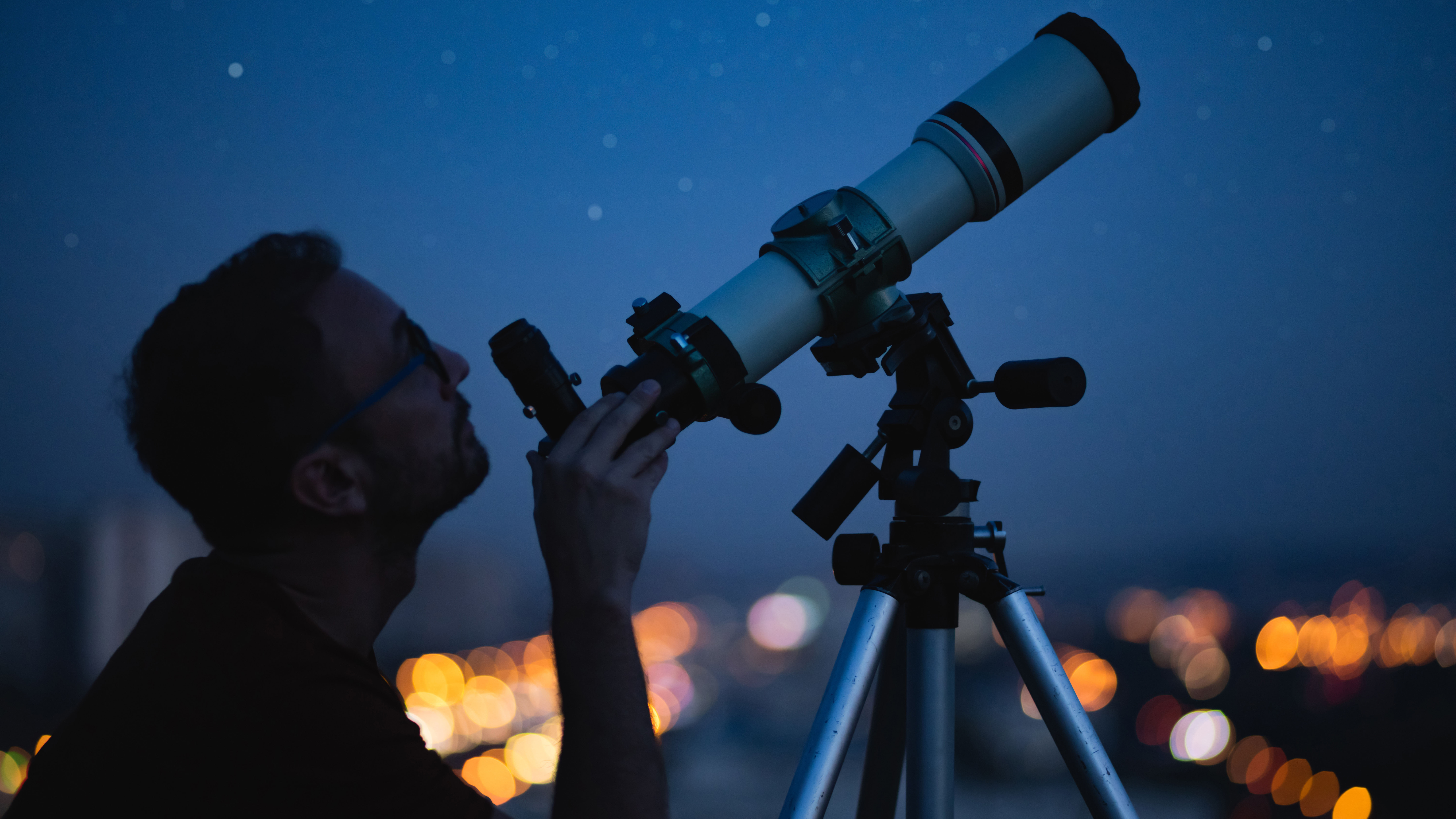
- Quick list
- Best overall
- Best under $500
- Best under $300
- Best under $200
- Best under $100
- Best for deep-space
- Best for backyard use
- Best for smartphones
- Best for children
- Best for teens
- Best smart telescope
- Best premium smart telescope
- Comparison results
- Budget telescopes FAQ
- Update log
- How to choose
- How we test
Astronomy optics can be expensive, but we have found the best budget telescopes for under $500, allowing you to enjoy the night sky without worrying about your budget. They range from simple tabletop models to full-size telescopes mounted on tripods. They have been tested by our expert reviewers to ensure that, while they may be affordable, they're not lacking in quality.
Celestial objects can be enjoyed for longer in winter, thanks to the shorter days with darker skies. Now really is a great time to invest in a budget-friendly telescope to pique your interest. Black Friday is coming this week, so make sure you are ready and tuned in so you don't miss out on savings.
If you want to spend more on your telescope, take a look at the best models available now with our guide to the best telescopes.
Best budget telescopes under $500 we recommend in 2025
Why you can trust Space.com
The quick list
This is a quick overview of what's in the best budget telescopes under $500 in the guide below. The links allow you to check out the detailed review quickly.
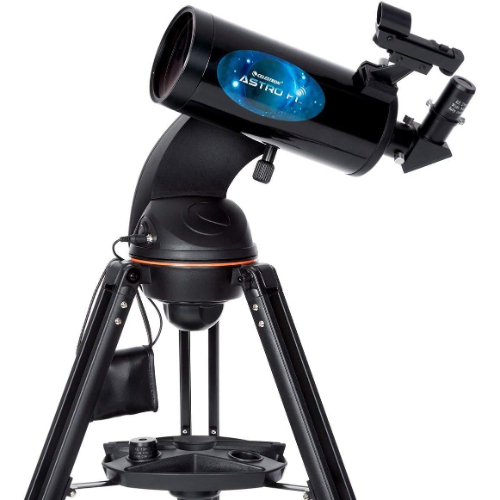
Best overall telescope under $500
This telescope offers a lot for your money; it's powerful, portable, and its motorised mount, paired with its app, gives you 100,000+ celestial objects to zoom in on.
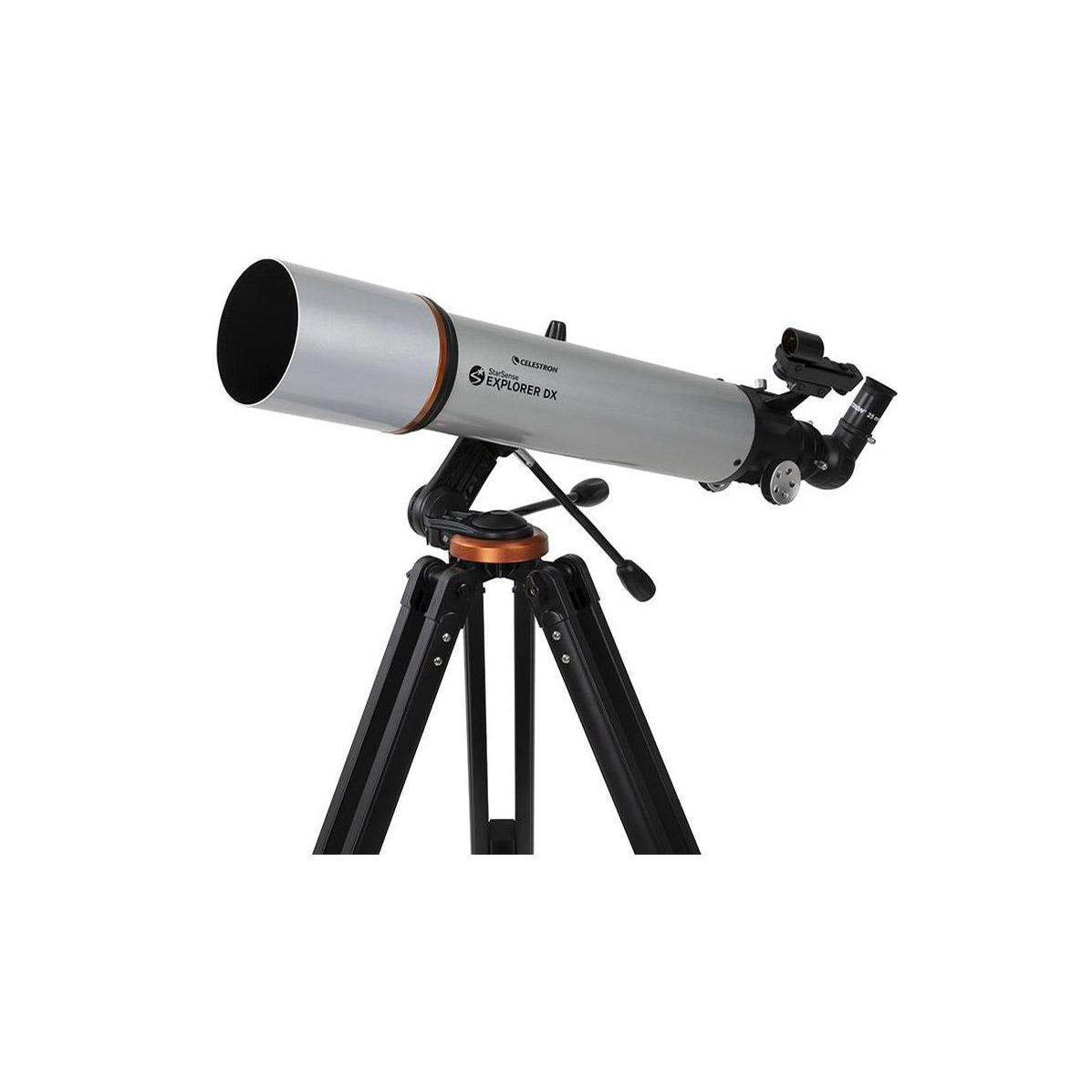
Best under $500
Similar to the DX 130AZ but with a smaller aperture, the DX 102AZ is lighter and easier to transport. It's a great choice for absolute beginners, and we loved using it alongside the app.
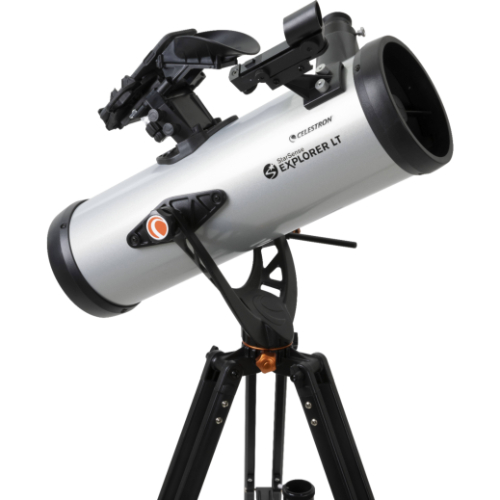
Best under $300
The StarSense Explorer LT 114AZ is an easy to set up app-aligned telescope, an affordable option for backyard moon and planet gazing.
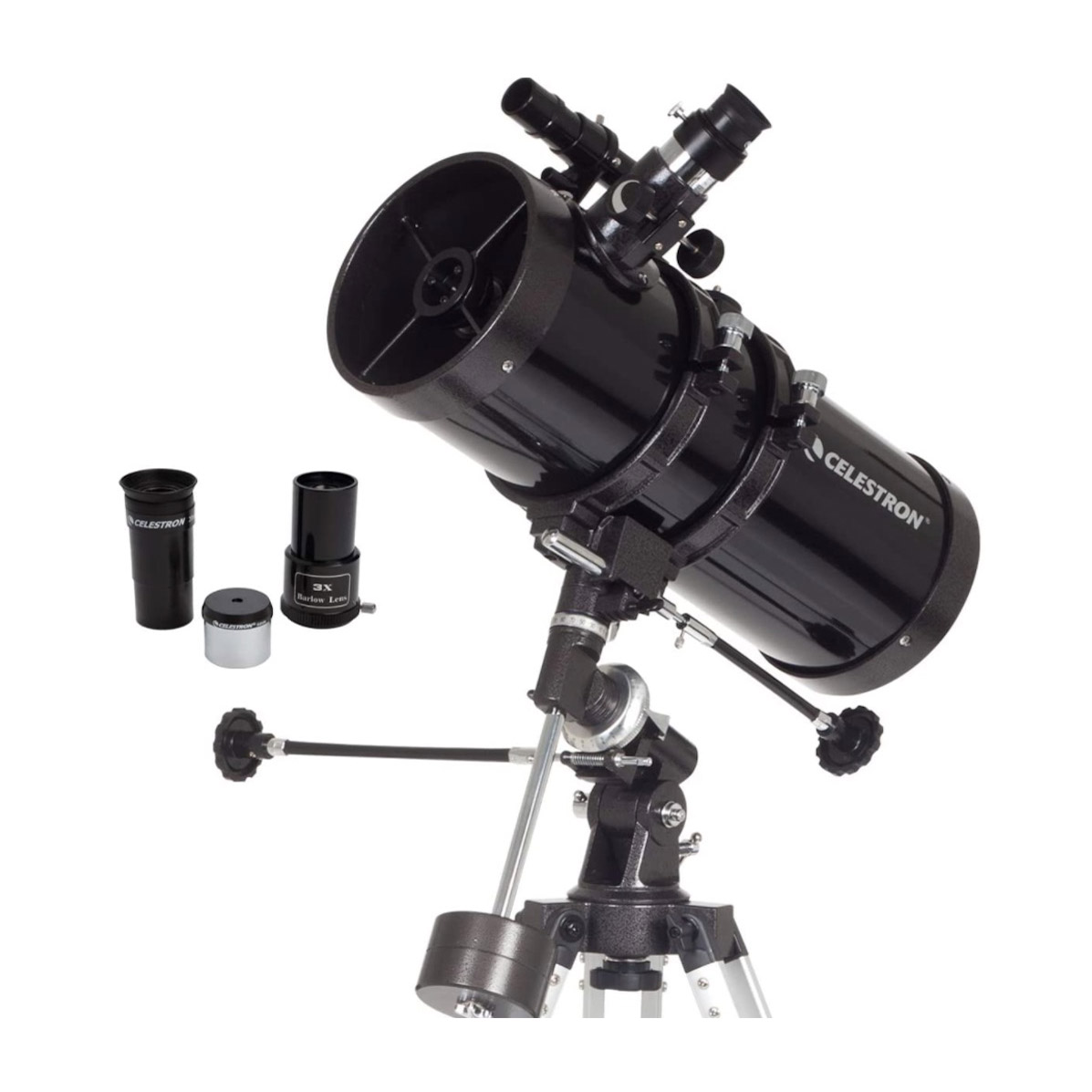
Best under $200
A great budget option with a large aperture and equatorial mount, though the optics are less powerful. At 22lbs, it's not all that portable, and its mount can take a little getting used to.
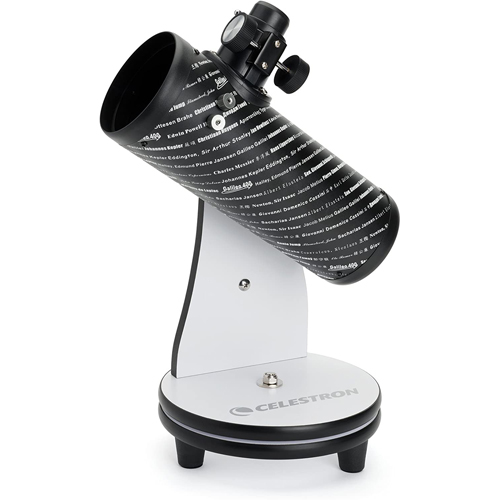
Best under $100
The Celestron FirstScope 76 is usually priced comfortably under $100 and it's ideal for younger stargazers wanting to look at the moon. It's sturdily built and is ready to use out-of-the-box.
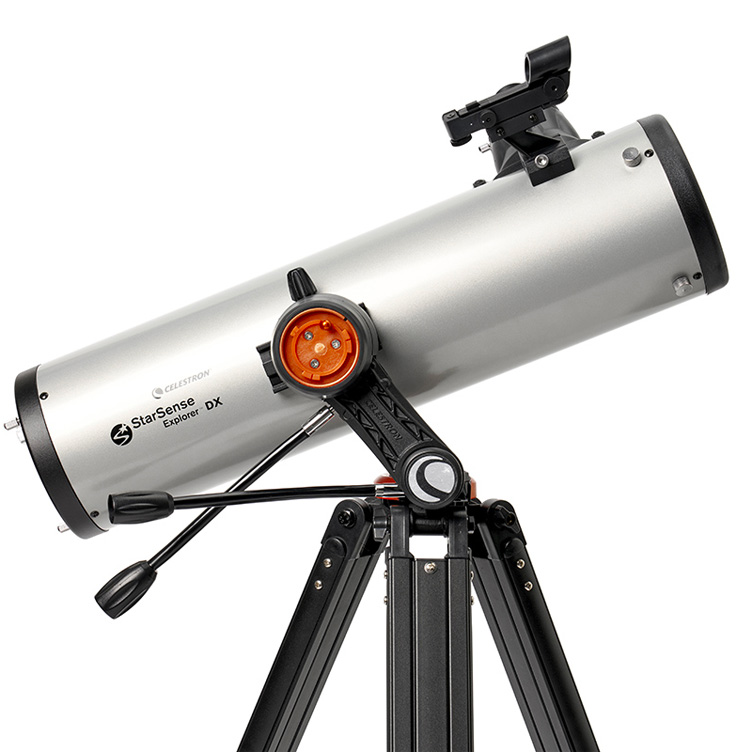
Best for deep space
This GoTo telescope comes highly recommended and the StarSense app makes locating objects in the night sky an absolute pleasure. Its 5-inch aperture gathers enough light to let you focus on deep space objects.
Load the next 4 products ↴
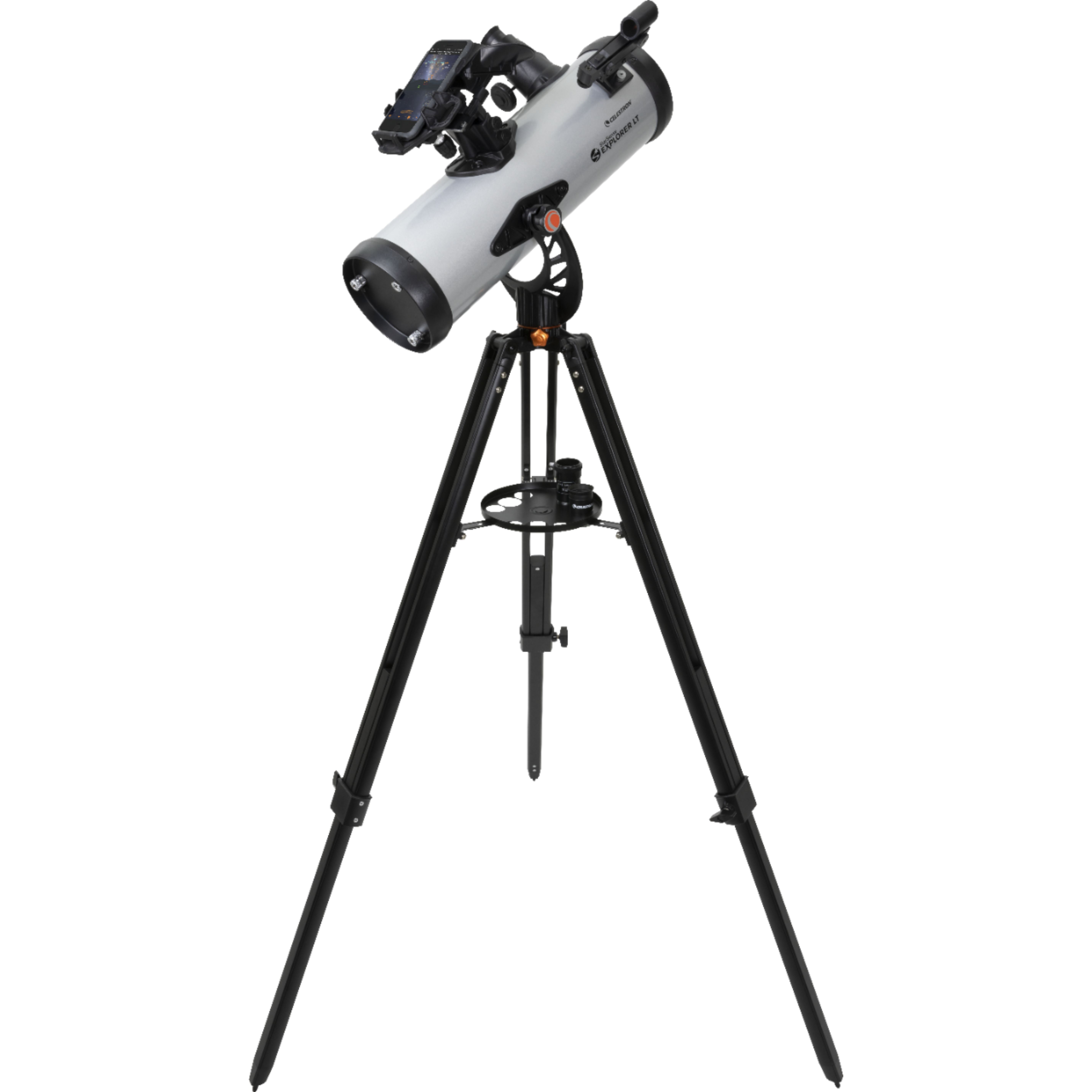
Best for backyard moon gazing
An excellent choice for both beginners and intermediate users on a budget. We love the hassle-free viewing experience here, and the supporting StarSense app is top-notch.
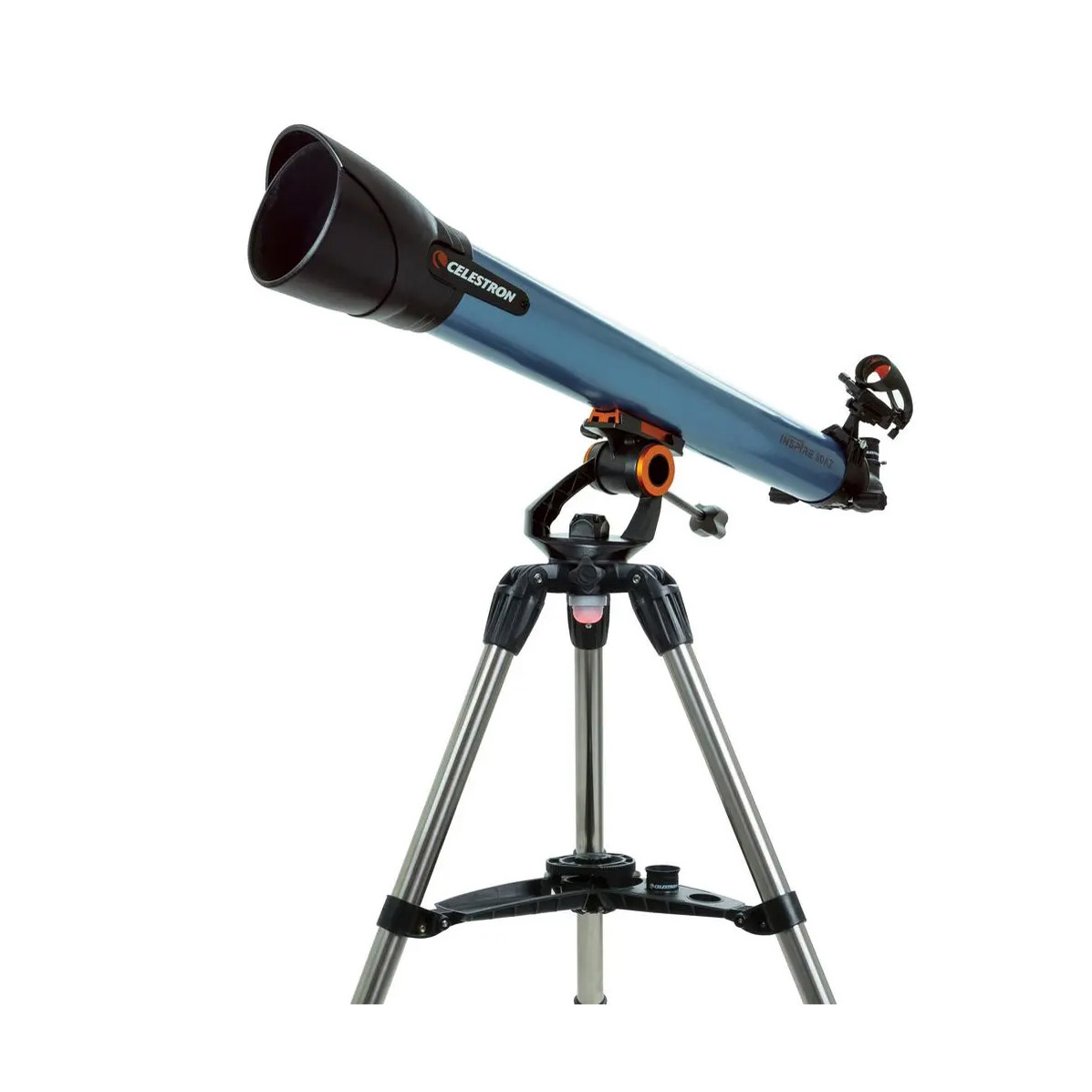
Best for smartphone astrophotography
The Celestron Inspire 100 AZ is well-suited to adult beginners and even offers a nice introduction to astrophotography. It comes with accessories including a smartphone adaptor.
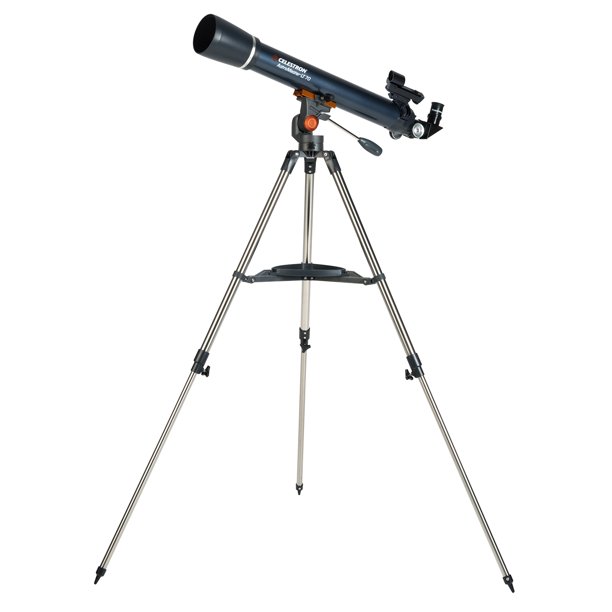
Best for children
The Celestron AstroMaster 70AZ is a brilliant choice for kids and absolute beginners. Its mount is easy to use, and its numerous accessories make sure you've got everything you need.
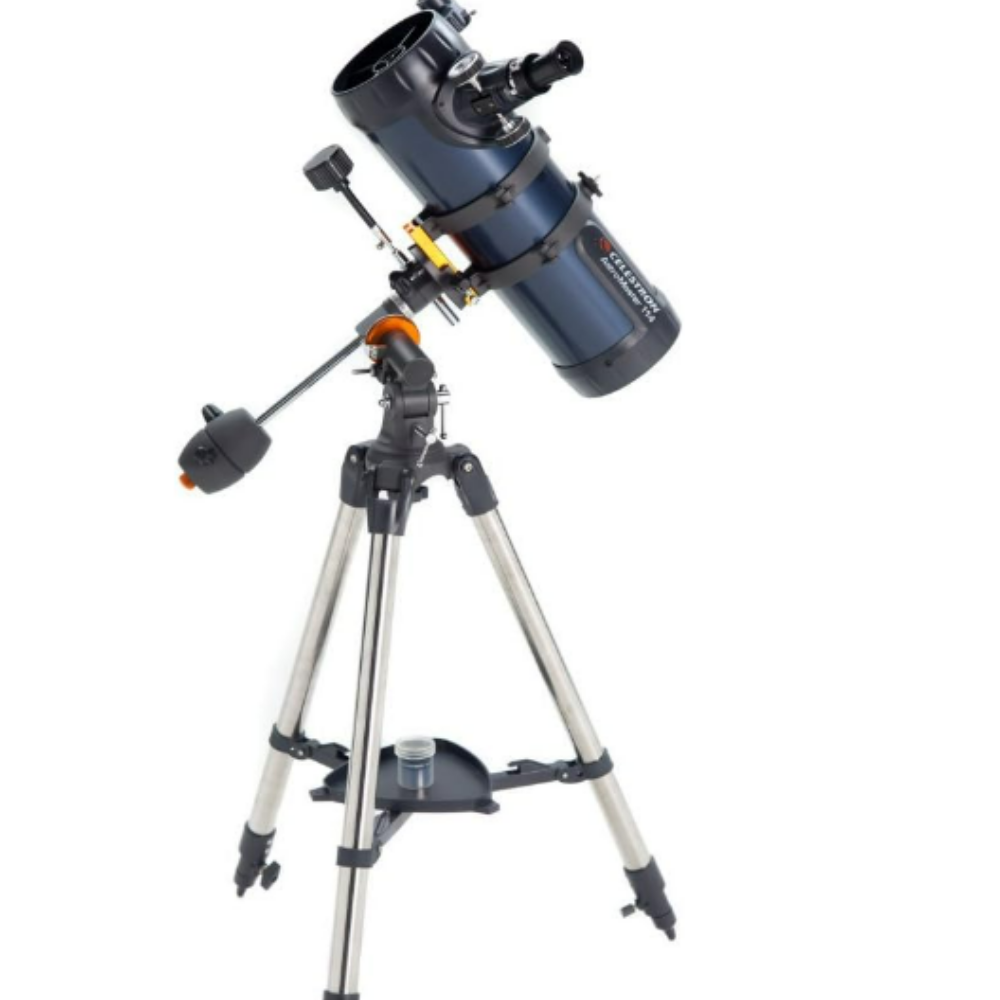
Best EQ mount for young skywatchers
The Celestron AstroMaster 114EQ is an excellent choice for younger skywatchers. It's solidly built but still lightweight and easy to transport, and comes with everything you need to get started.
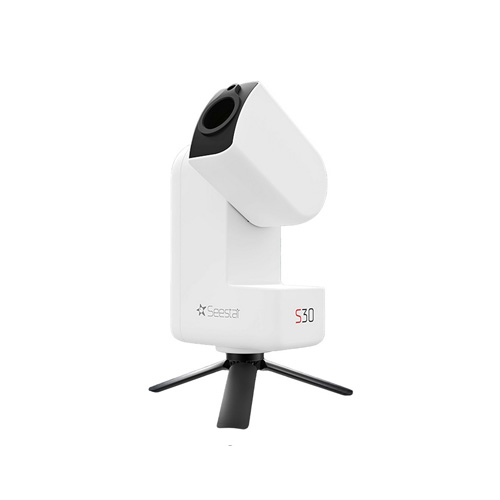
Best smart telescope
An affordable yet impressive smart telescope for less than $400 offering great views of the night sky. This is one all the family can enjoy and from any location, due to its portability.
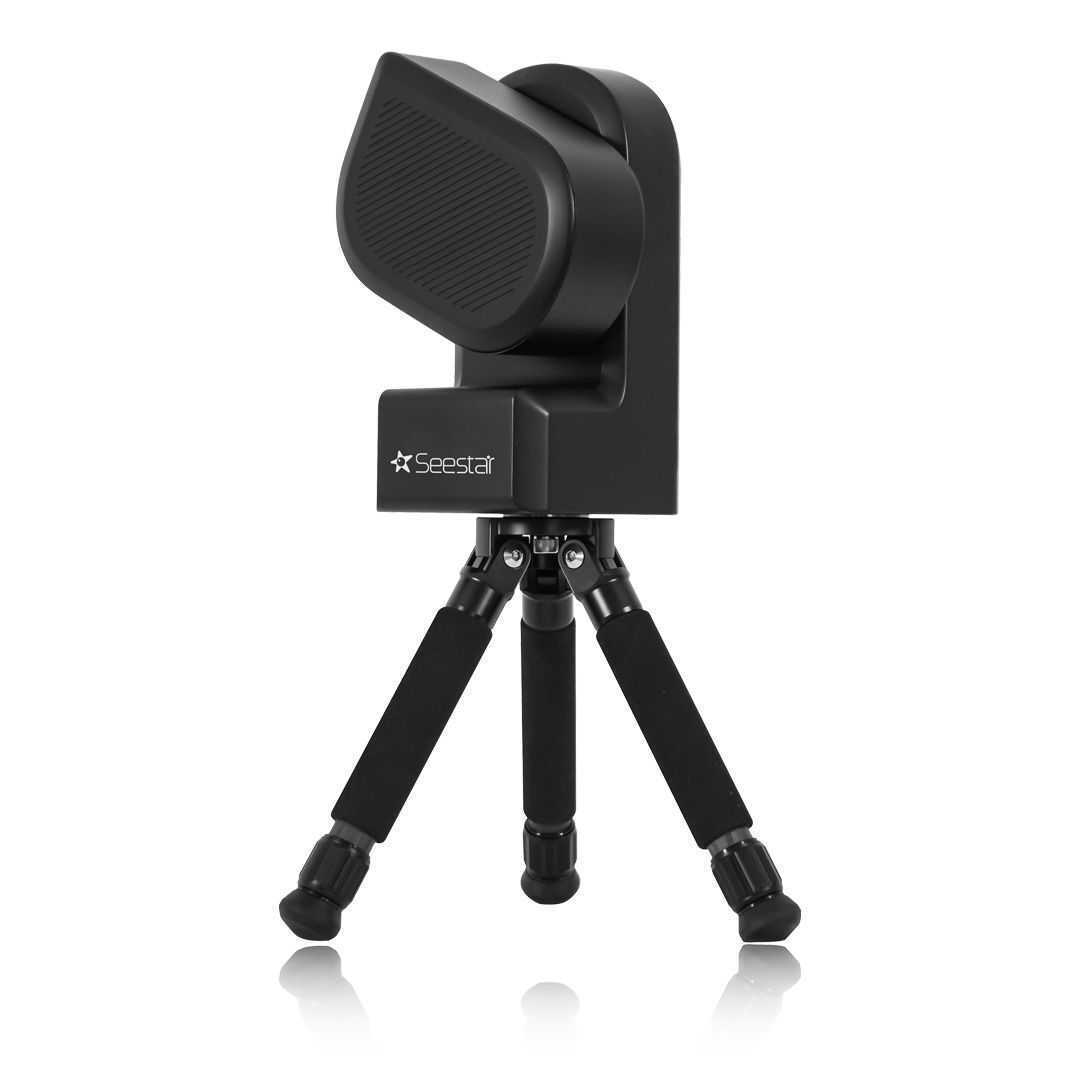
Best premium smart telescope around $500
This premium smart telescope comes in just over $500 but it packs a punch, offering an easy set up allowing you to view the night sky in a matter of minutes.
The best budget telescopes we recommend in 2025
The best overall telescope under 500 dollars
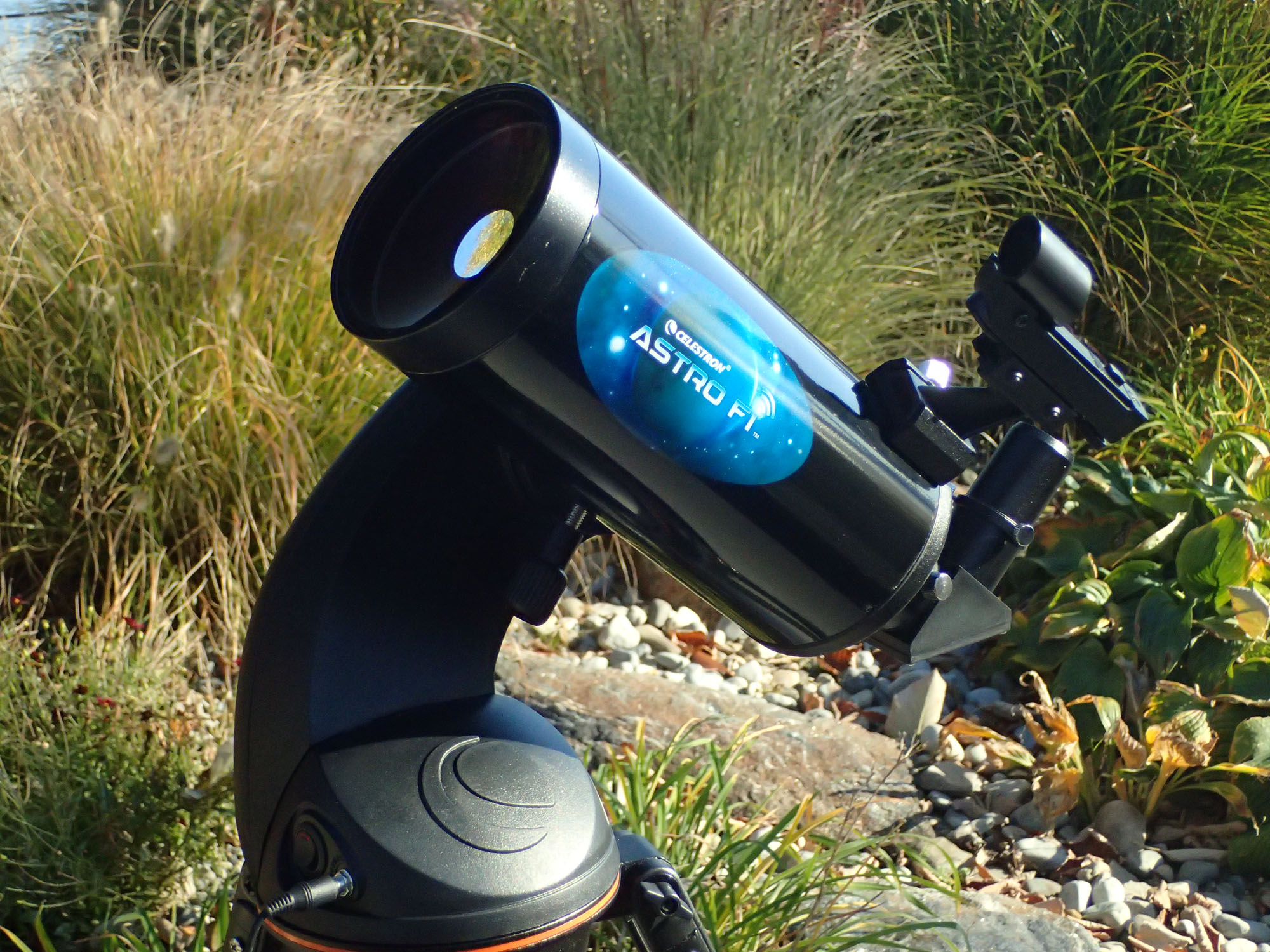
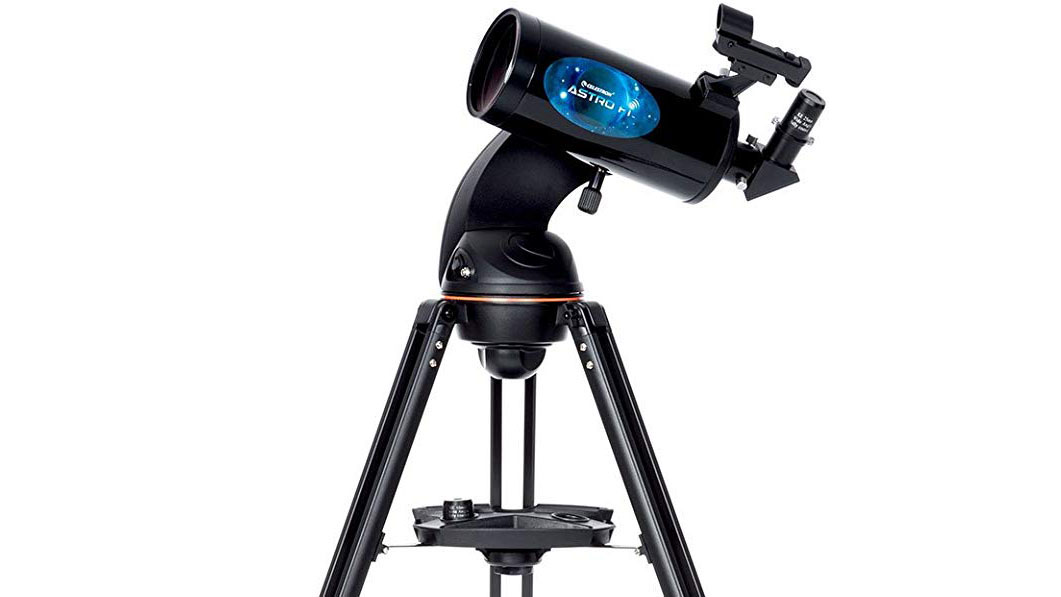
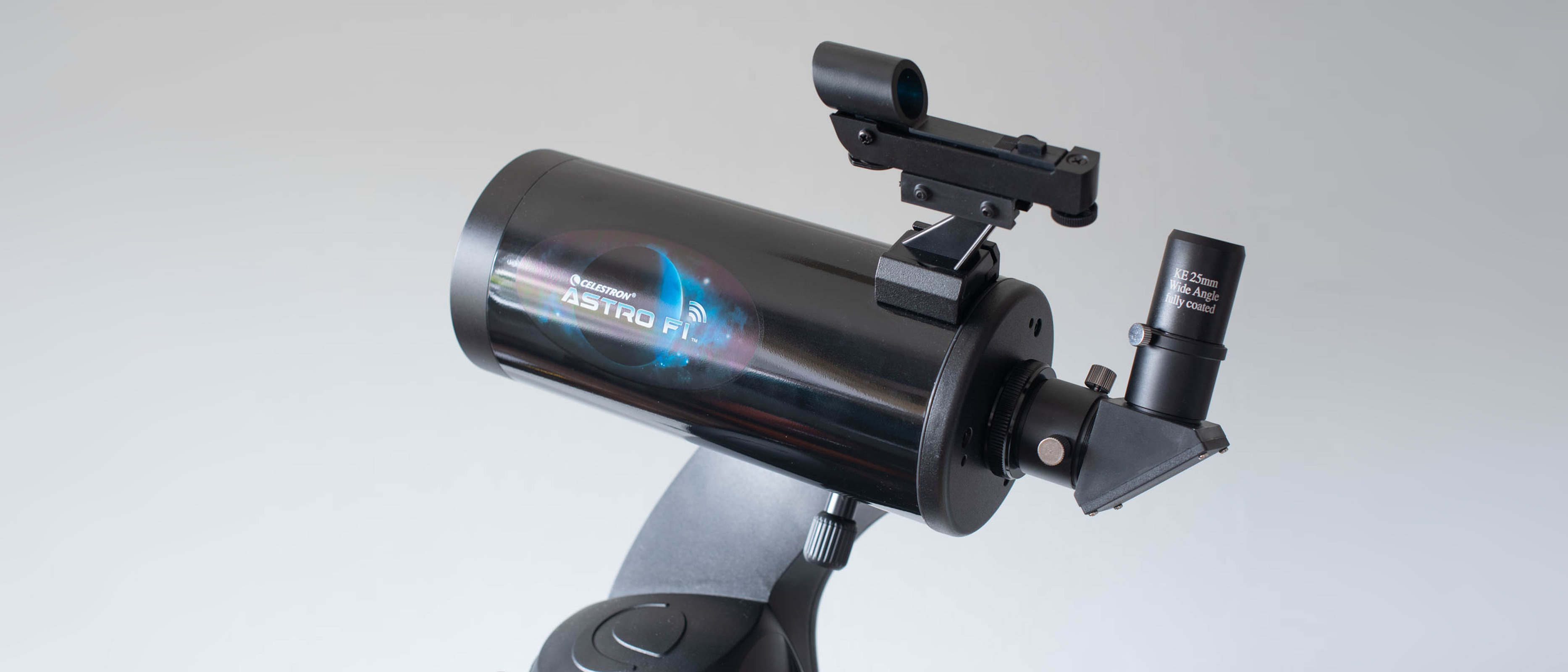
Specifications
Reasons to buy
Reasons to avoid
✅ You want to take your telescope with you: the DX 102AZ is light and easily transported, and easy to set up.
✅ You like or want the help of technology: The StarSense app, with its bank of 100,000+ objects, will auto-locate objects in the night sky.
❌ You want to view more distant targets: The DX 130AZ has a larger aperture which helps with seeing objects deeper into space.
❌ You're a purist: By this, we mean someone who doesn't want the aid of technology and really doesn't mind spending time setting up their telescope.
🔎 Celestron Astro Fi 102 offers quality on a budget. It's portable, powerful and easy to use thanks in part to its motorized mount, which makes it simple to stargaze. It's equally suitable for beginners or intermediates. ★★★½
The Celestron Astro Fi 102 is in an affordable price bracket for a Maksutov-Cassegrain scope, it's portable, reasonably powerful and boasts a host of user-friendly features, including a database of 100,000+ targets to home in on. Once set up, it's a breeze to use and it's equally suitable for beginners or intermediates.
Aperture: This telescope boasts a 102mm (4 inches) aperture, which absorbs enough light for general stargazing and will allow you to spot nebulae, and some other deep space objects, though its narrow field of view isn't perfect for that.
Optics: In our review of the Celestron Astro FI 102, we were generally impressed by its optical quality. We were able to get a close look at Saturn's famous rings, Mars, and also Jupiter. The edges of the scope's images are a little soft but we'd expect that from a telescope in this price bracket.
Technology: The Celestron Astro Fi 102 has a motorized mount that, coupled with the official smart app, SkyPortal, tracks objects and does so at surprising speed. You can also use a video game controller to make fine adjustments to the scope.
Accessories: The telescope includes a 25 mm and 10 mm eyepieces, a smartphone adapter built into the lens cap, an adjustable tripod with accessory tray and a detachable finderscope.
Quality of build: While the Celestron Astro Fi 102 delivers quality for the price, it doesn't exactly have a premium feel. In particular, we'd prefer a better quality tripod, one that offered more stability.
Attributes | Notes |
|---|---|
Design | Maksutov-Cassegrain |
Functionality | Easy to use for beginners and intermediates. |
Performance | Good quality optics, slight softness at edges |
The best budget telescope under 500 dollars

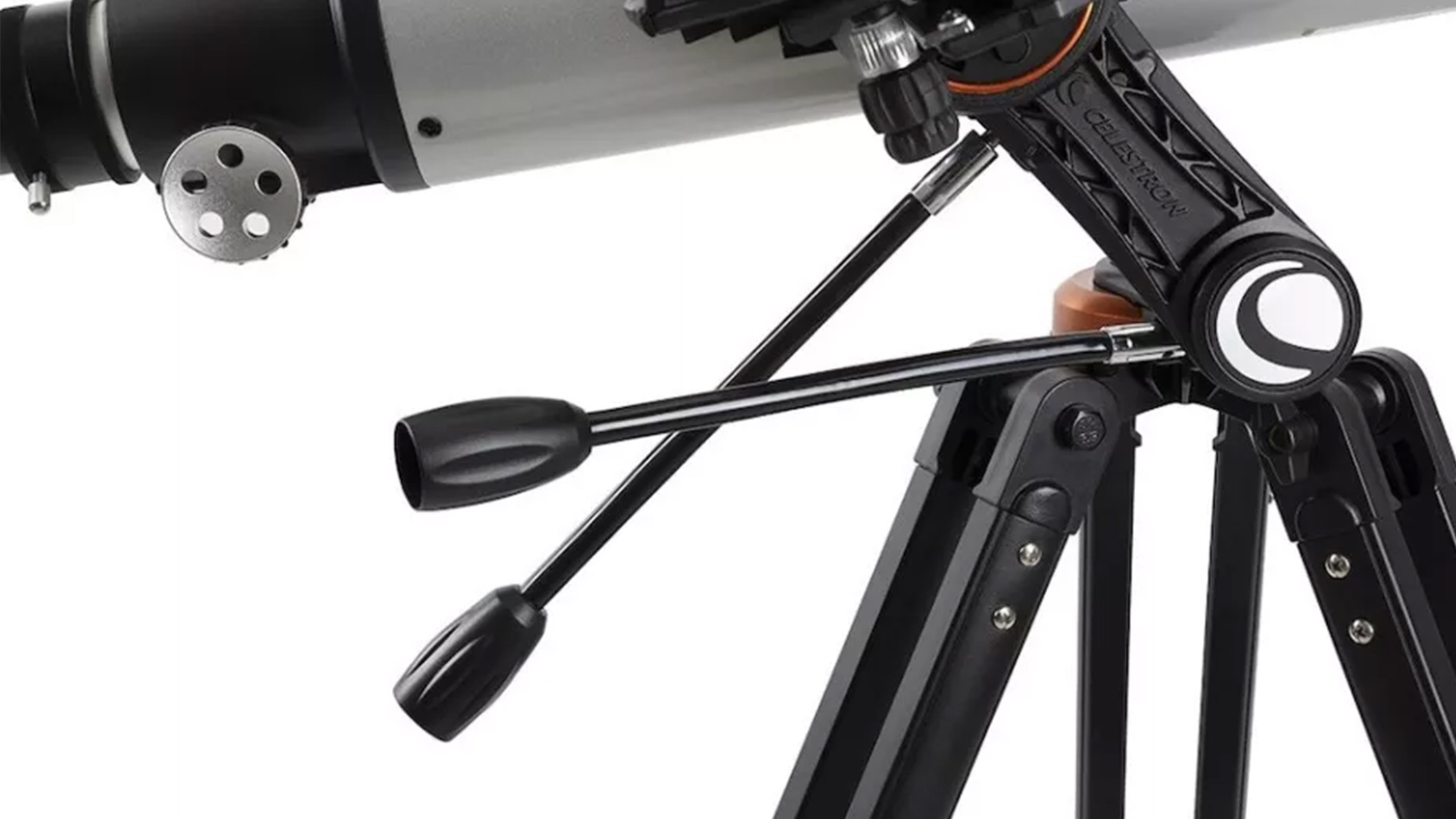
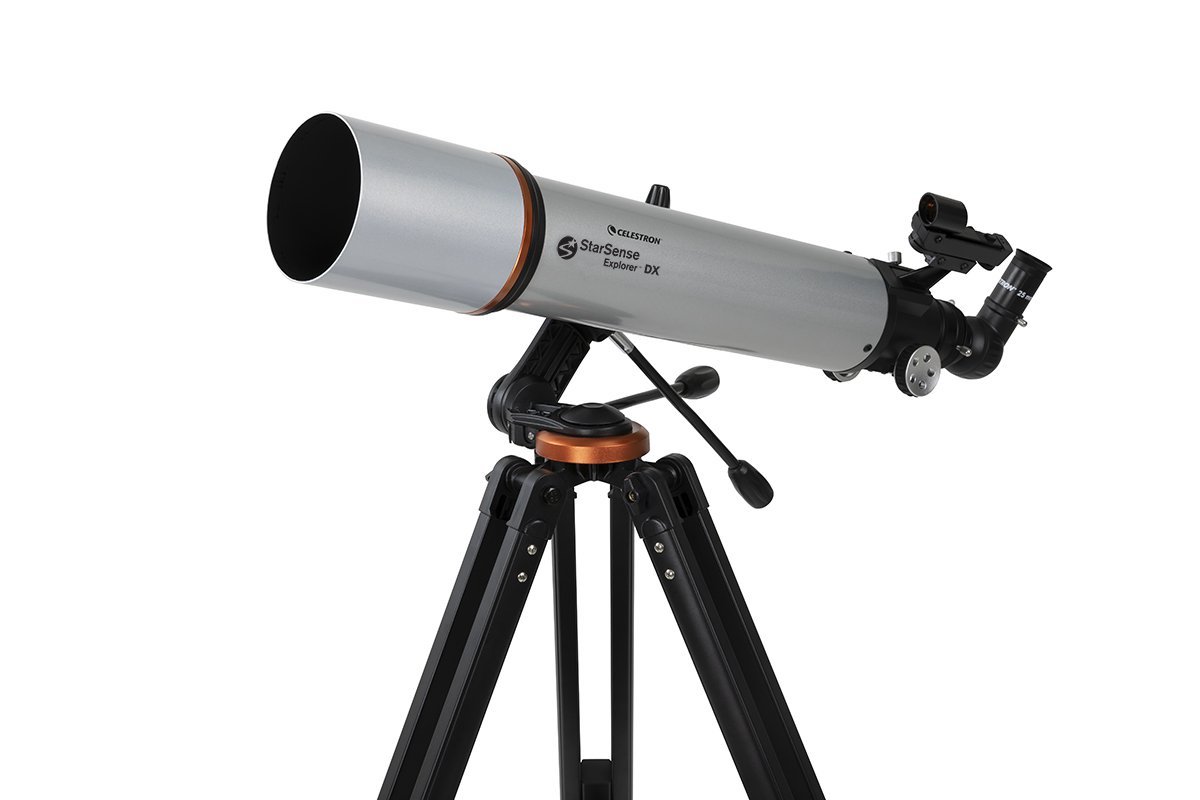
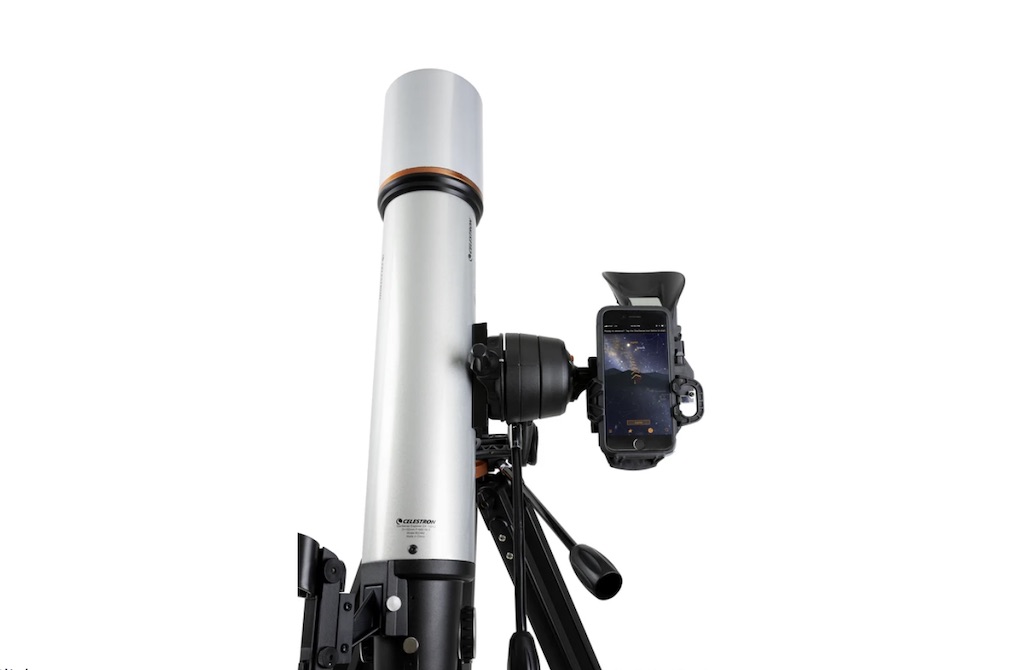
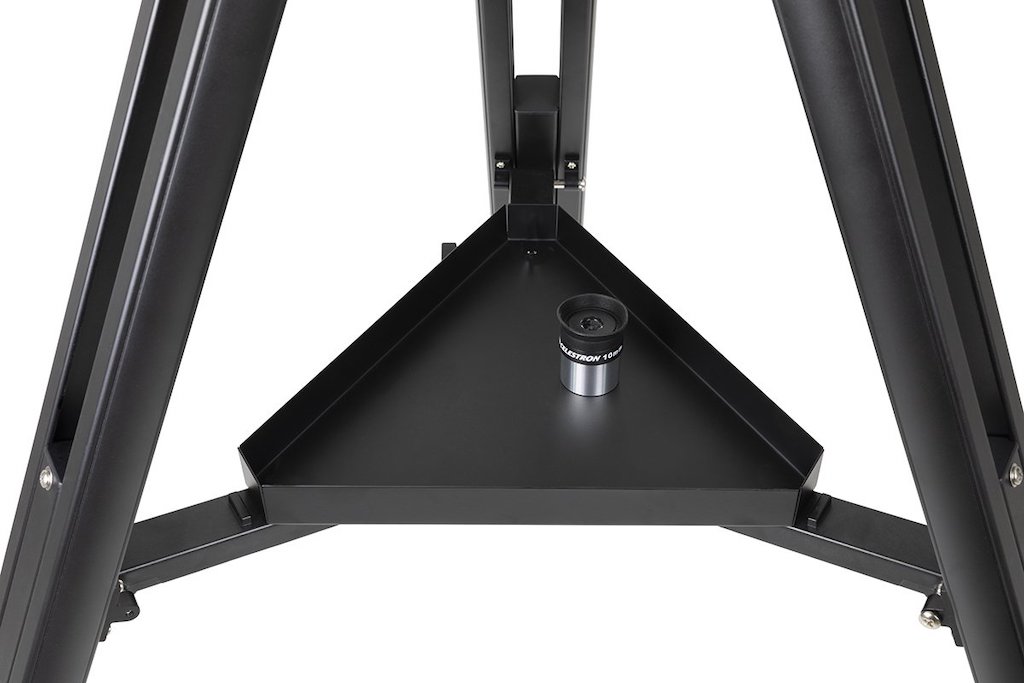
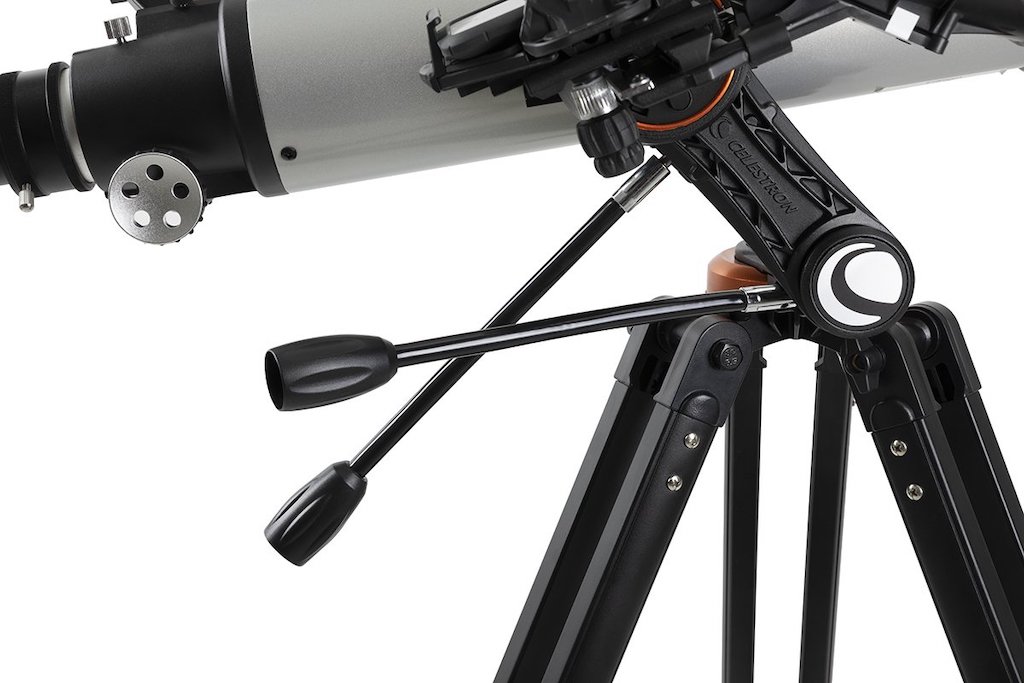


Specifications
Reasons to buy
Reasons to avoid
✅ You want to take your telescope with you: the DX 102AZ is lighter and more easily transported than the DX 130AZ, so if you want to stargaze outside of your yard, this is a great choice.
✅ You like or want the help of technology: The StarSense app will locate visible targets in the night sky and point you towards them.
❌ You want to view more distant targets: the DX 130AZ has a larger aperture which helps with seeing objects deeper into space.
❌ You're an absolute beginner: This isn't a bad choice if you were an absolute beginner, but there are other, cheaper models in this guide that are better suited for beginners.
🔎 The Celestron StarSense Explorer DX 102AZ works well for both beginner and intermediate astronomers and offers a satisfying and simple stargazing experience. The aperture isn't as large as the DX 130AZ but it is easier to transport around. ★★★½
If you're a relative beginner who's looking for an intuitive telescope to navigate the night sky, then the Celestron StarSense Explorer DX 102AZ may be the right choice for you. It works seamlessly alongside the StarSense app to help you choose and locate different objects of interest, and it's also fairly light to transport out in the field.
Celestron has made locating objects in the sky not just easy, but fun — especially for those just starting out in a skywatching hobby. However, the system has a few notable limitations that could curtail observing sessions. The prowess of the instrument is more suited to beginners than to dedicated observers.
Aperture: The clue is in the name: the Celestron StarSense Explorer DX 102AZ has a 102 mm aperture. It's not the largest aperture on the market, but it's wide enough to achieve bright images of the Moon and planets within our solar system.
Optics: The Celestron StarSense Explorer DX 102AZ includes a doublet lens made from two different types of glass with a focal ratio of f/6.5. This means it provides a wide field of view and bright images while remaining fairly compact. While that aids transportation, we should note ot can lead to a little bit of color fringing at high magnifications.
Technology: The StarSense app makes is very easy to locate any objects you wish to view. Once you've selected your object of choice, a set of arrows on the screen tells you which way to move your telescope to get to your target object, making it one of the fastest finding systems we've come across.
Accessories: The telescope also comes with a StarPointer red-dot finderscope, a star diagonal, and a tripod. Two eyepieces, 25mm and 10mm, offer 26x and 66x magnifications.
Quality of build: In our StarSense Explorer DX 102AZ review, we found the overall build quality of this telescope to be very good for the price. It's well built, and features a number of useful details like the plastic covers for the eyepieces. There's a bit of stiffness when controlling the telescope, however, especially in the clutch that holds the telescope in altitude.
- Read our full Celestron StarSense Explorer DX 102AZ review
Attributes | Notes |
|---|---|
Design | Achromatic refractor. |
Functionality | Intuitive push-to system for finding objects. |
Performance | Good app and good optics lead to a good experience. |
The best budget telescope under 300 dollars
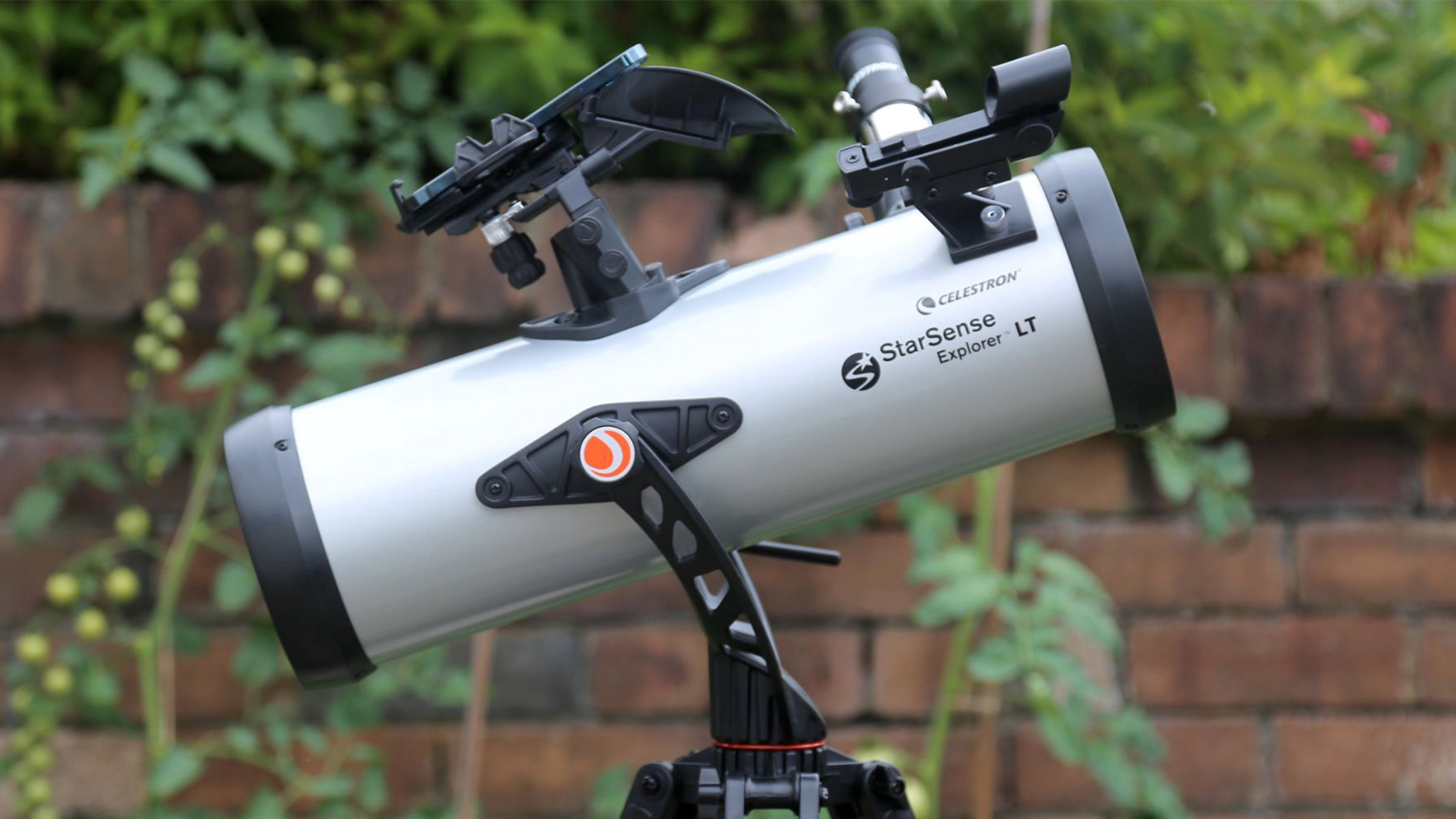
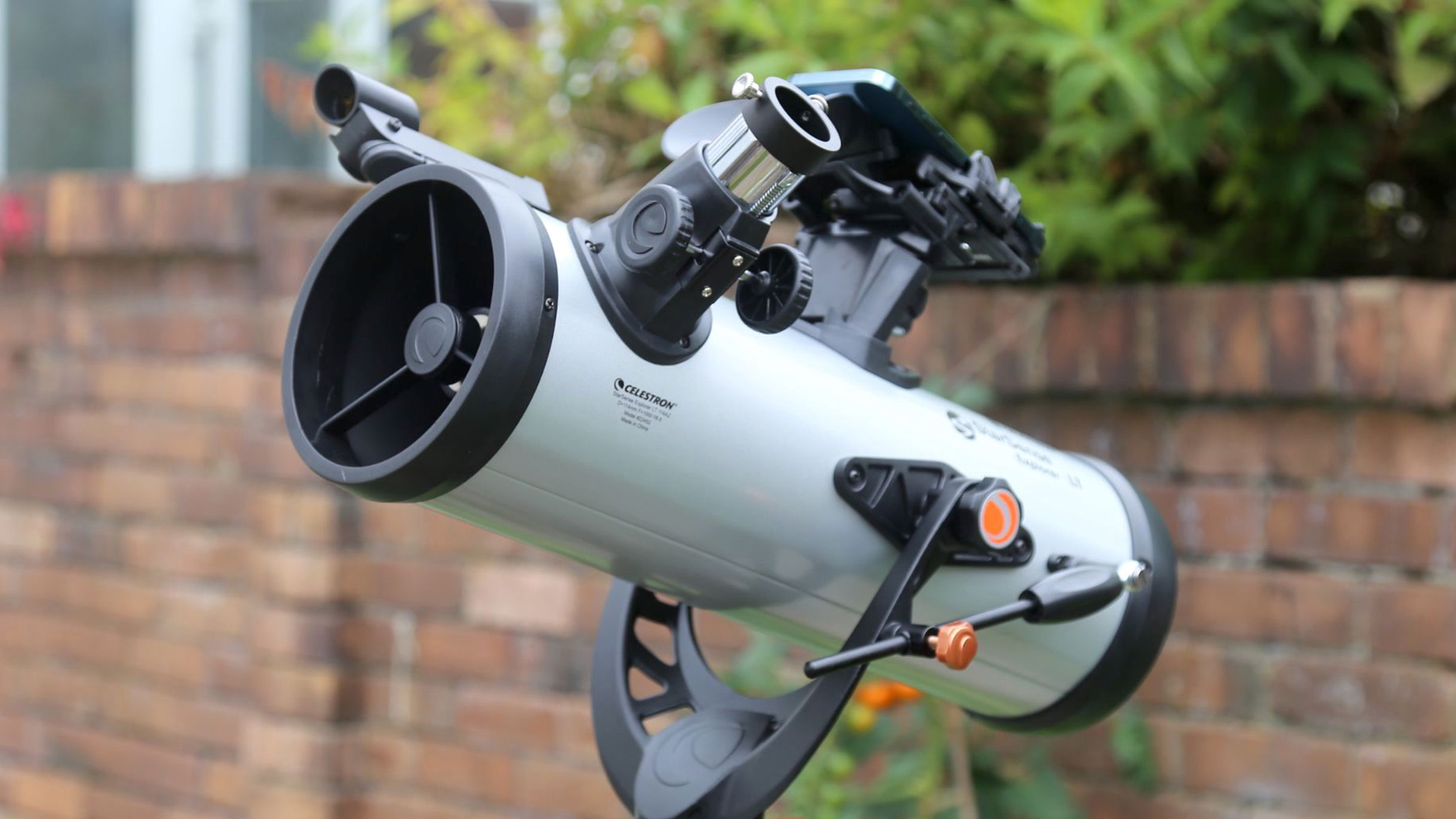
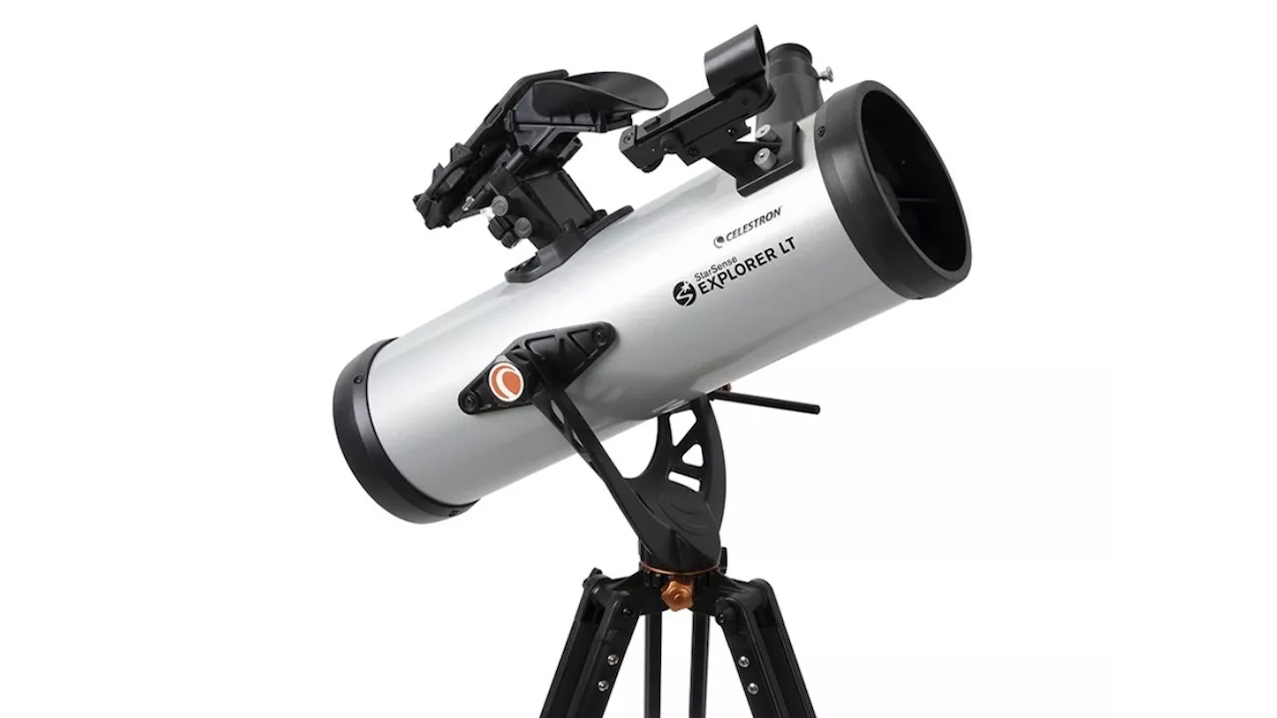
Specifications
Reasons to buy
Reasons to avoid
✅ You're a beginner: This telescope is easy to set up and operate, and affordable with it.
✅ You mostly want to look at the moon and planets: The Celestron StarSense Explorer LT 114AZ offers good views of objects within our own solar system.
❌ You want to view targets outside our solar system: This is not the biggest or the most powerful telescope and struggles with deep space targets.
🔎 The Celestron StarSense Explorer LT 114AZ is a sound, pocket-friendly choice fantastic choice for those wanting an easy stargazing experience of views within our solar system. ★★★
The Celestron StarSense Explorer LT 114AZ is a capable scope that's easy to use and it's an appealing option for backyard stargazers or beginners. This Newtonian reflector can offer good views of the moon and other objects in our solar system, though it falls behind when it comes to observing nebula and galaxies.
Aperture: With its 4.5-inches/114 mm aperture, the Celestron StarSense Explorer LT 114AZ is more focused on magnification than letting in large amounts of light. To that end, it magnifies bright objects but struggles with deep space.
Optics: The 114AZ brings out the detail when you're planet spotting and, in our review of the Celestron StarSense Explorer LT 114AZ, we were impressed by its views of Saturn.
Technology: The LT 114AZ doesn't have a motorized mount, but it does feature StarSense, which uses the smartphone's camera to look at the reflection of stars and, via the app, guide you to your target. We were seriously impressed by how well this worked.
Accessories: A smartphone dock, tripod and StarPointer red dot finderscope are included, though we weren't particularly impressed with the latter. It includes a 25mm and 10mm eyepieces, 2x Barlow Lens and Celestron's Starry Night software.
Quality of build: While we were generally happy with the quality of the tube, the LT 114AZ's tripod could be a little sturdier.
Attributes | Notes |
|---|---|
Design | Alt-azimuth |
Functionality | Easy to use, smartphone apps makes finding targets easier |
Performance | Good viewing planets, less suited to deep space |
The best budget telescope under 200 dollars
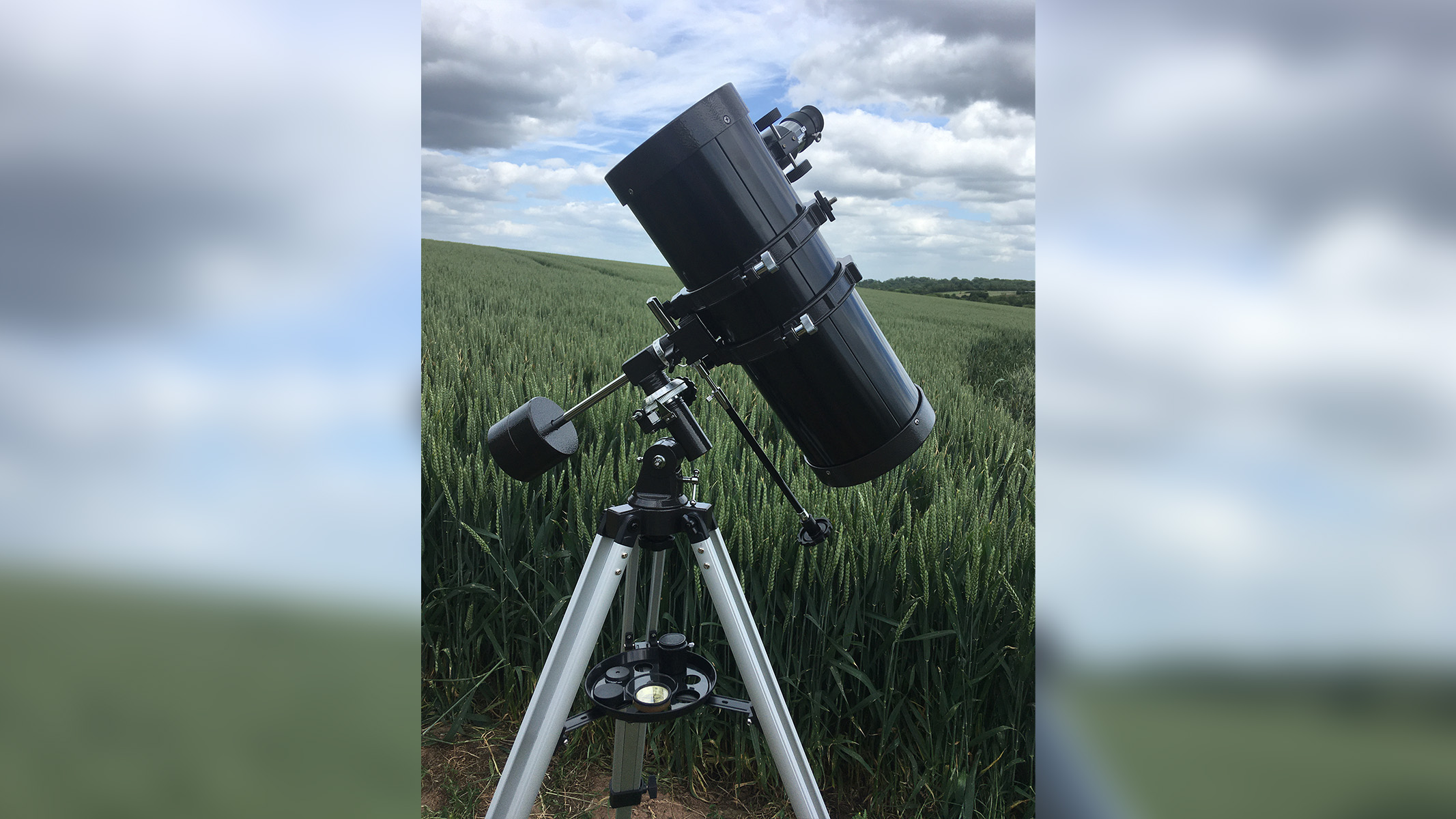
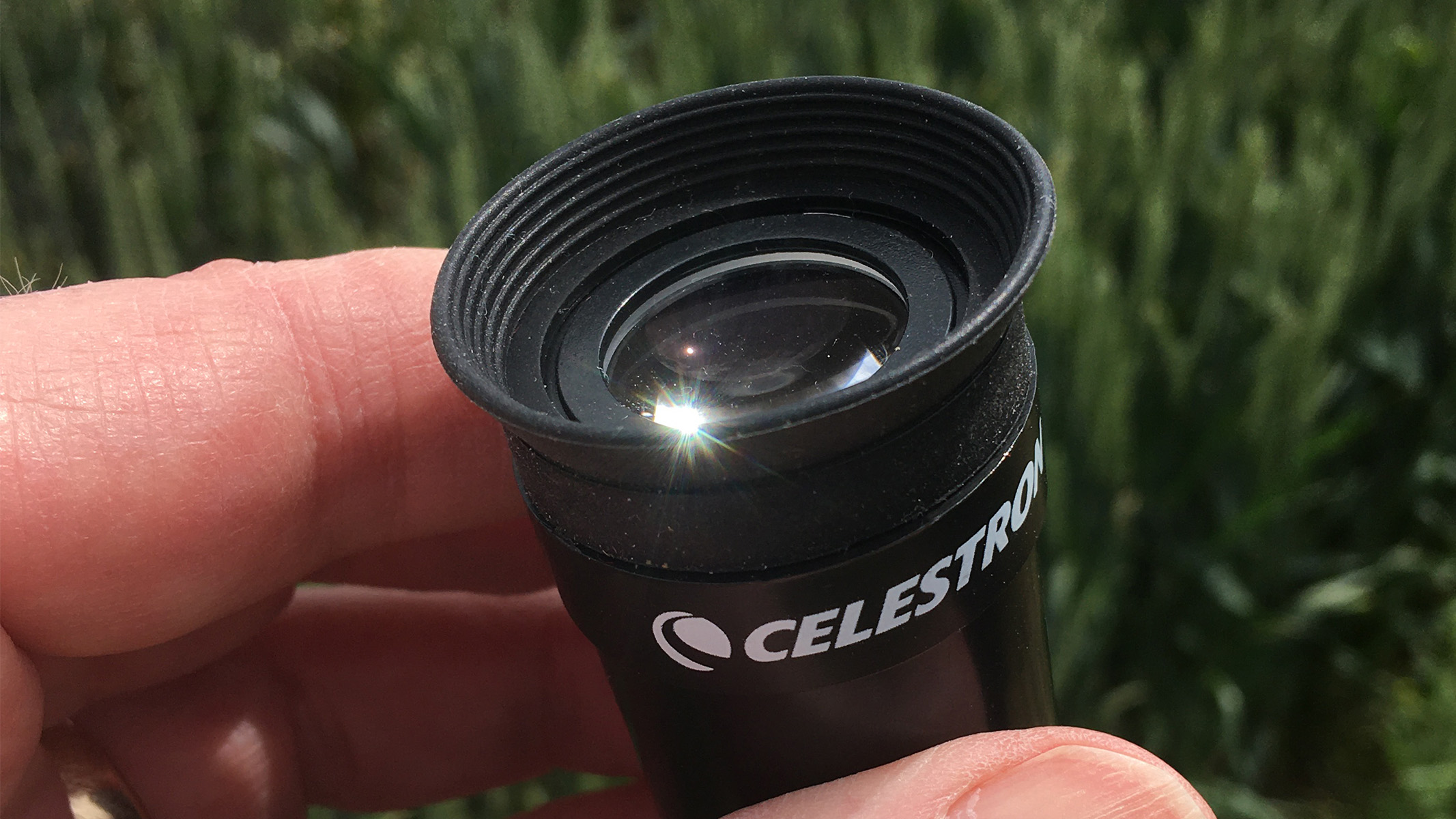
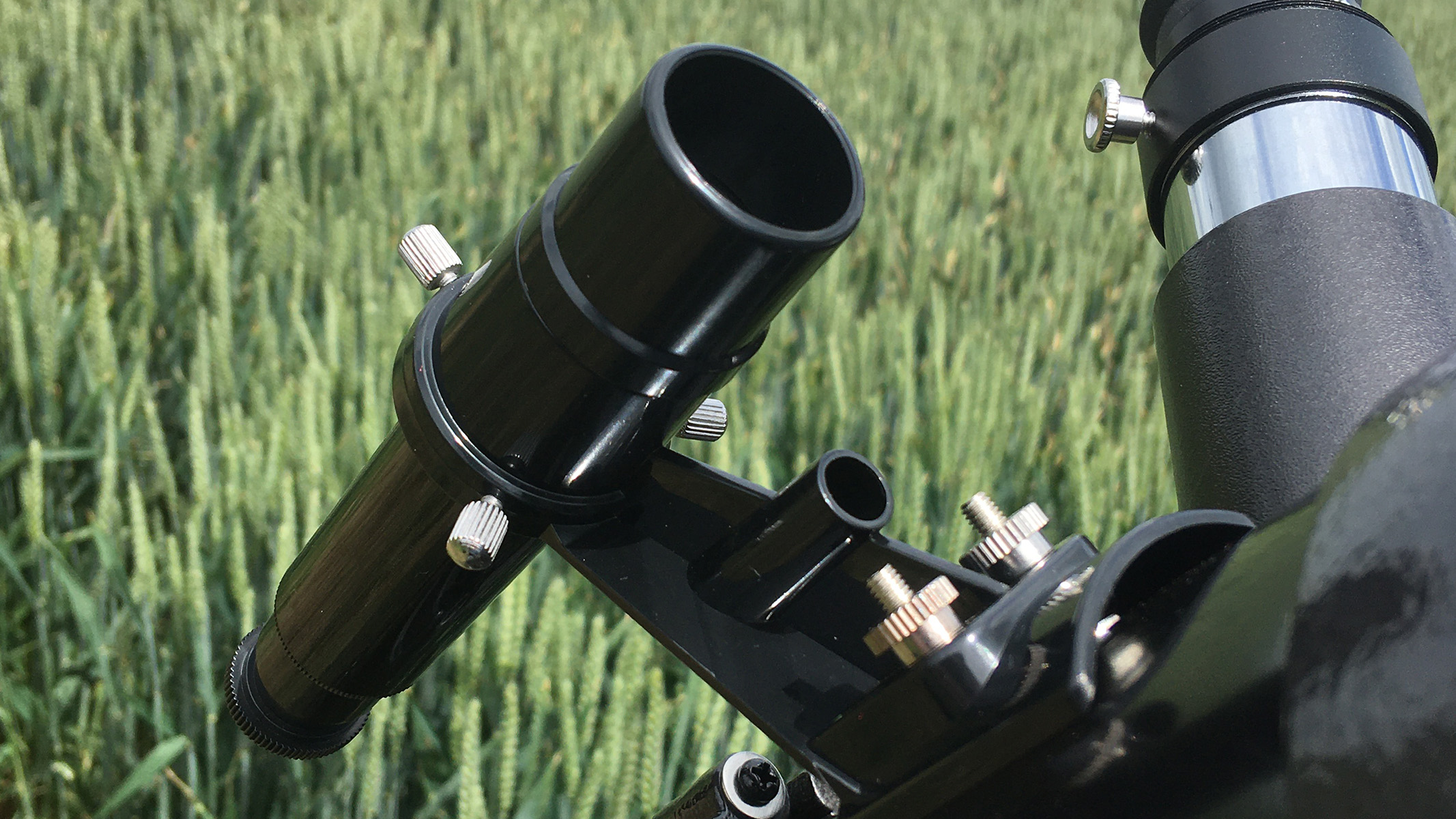
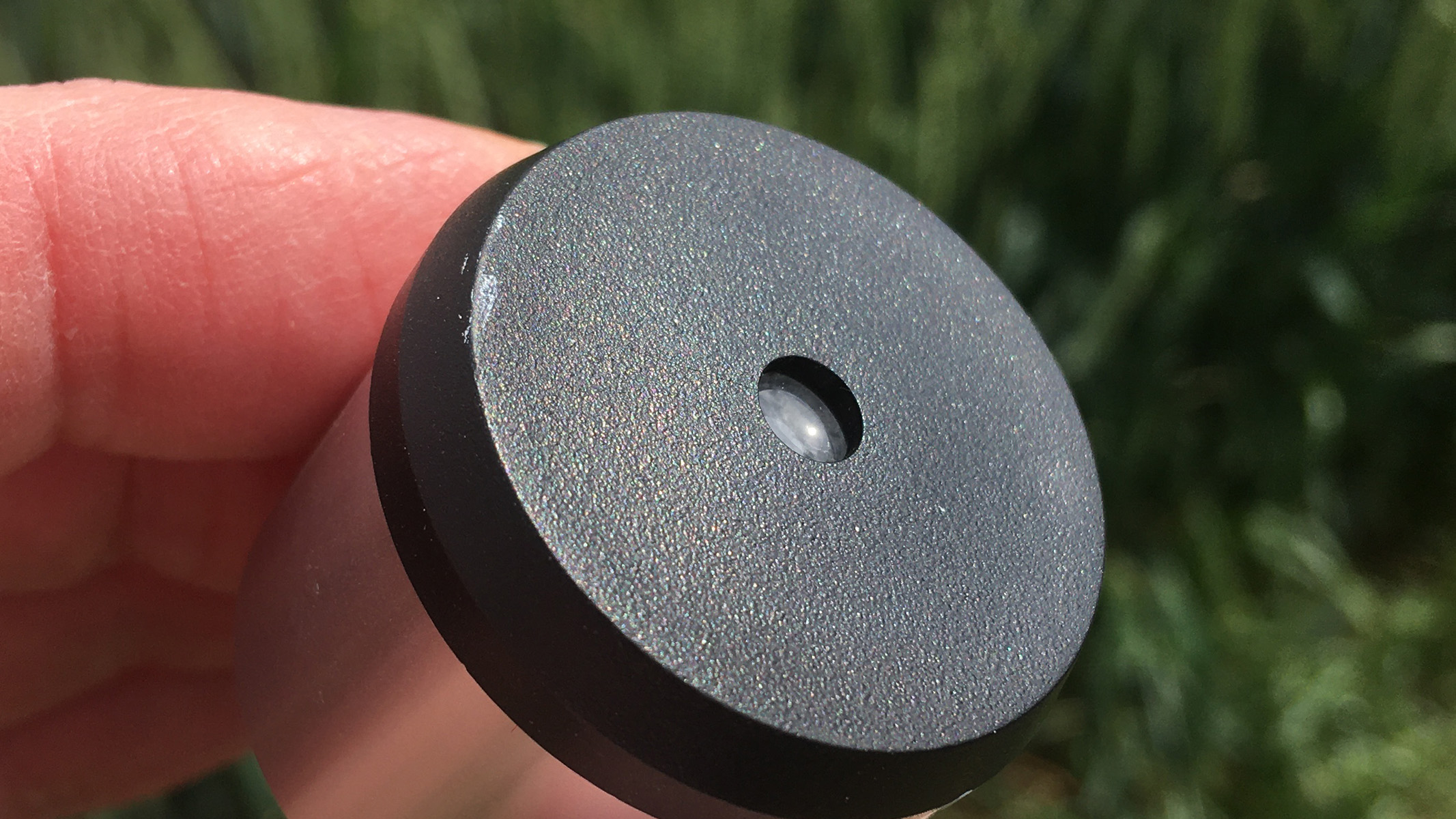
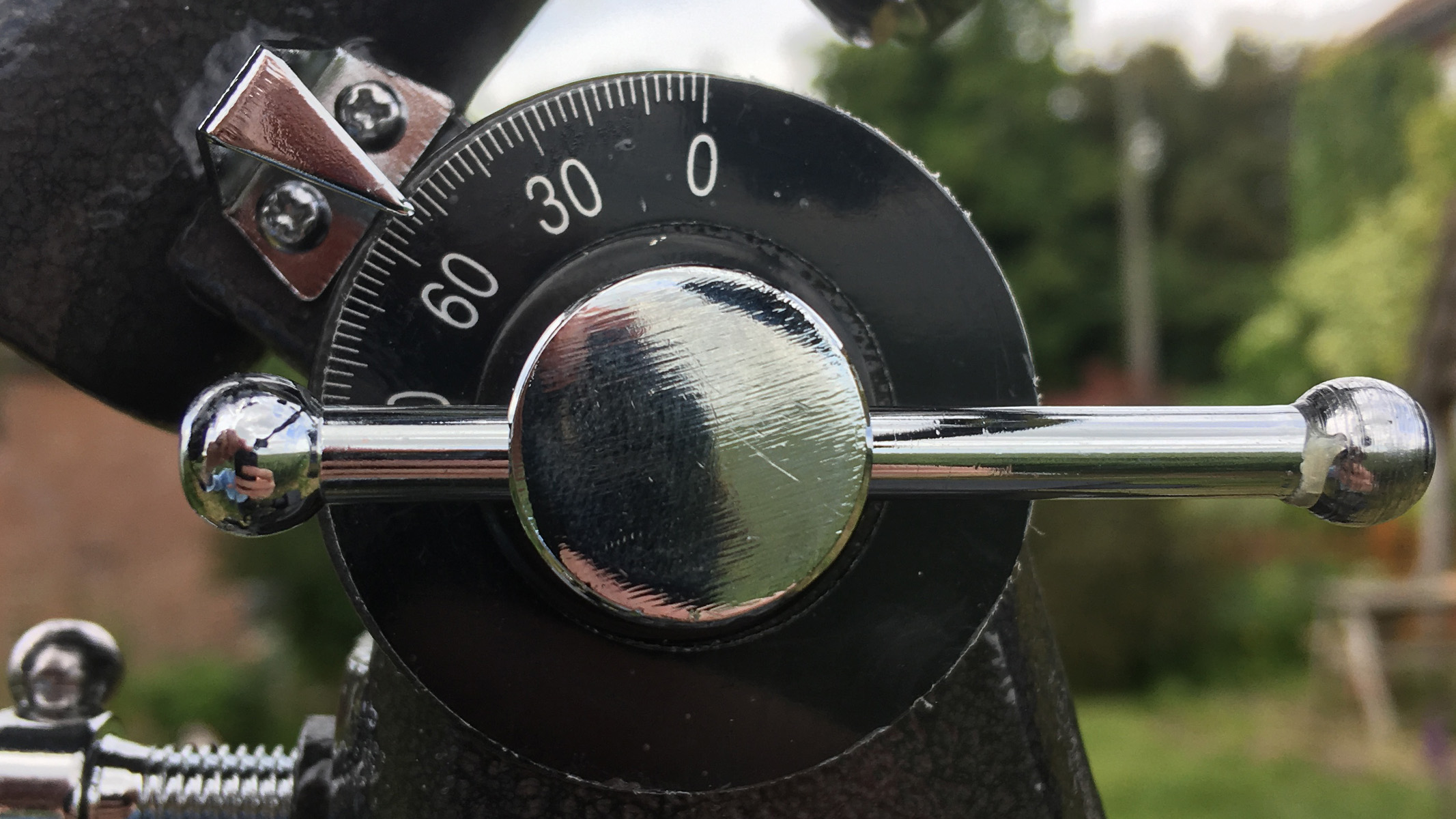
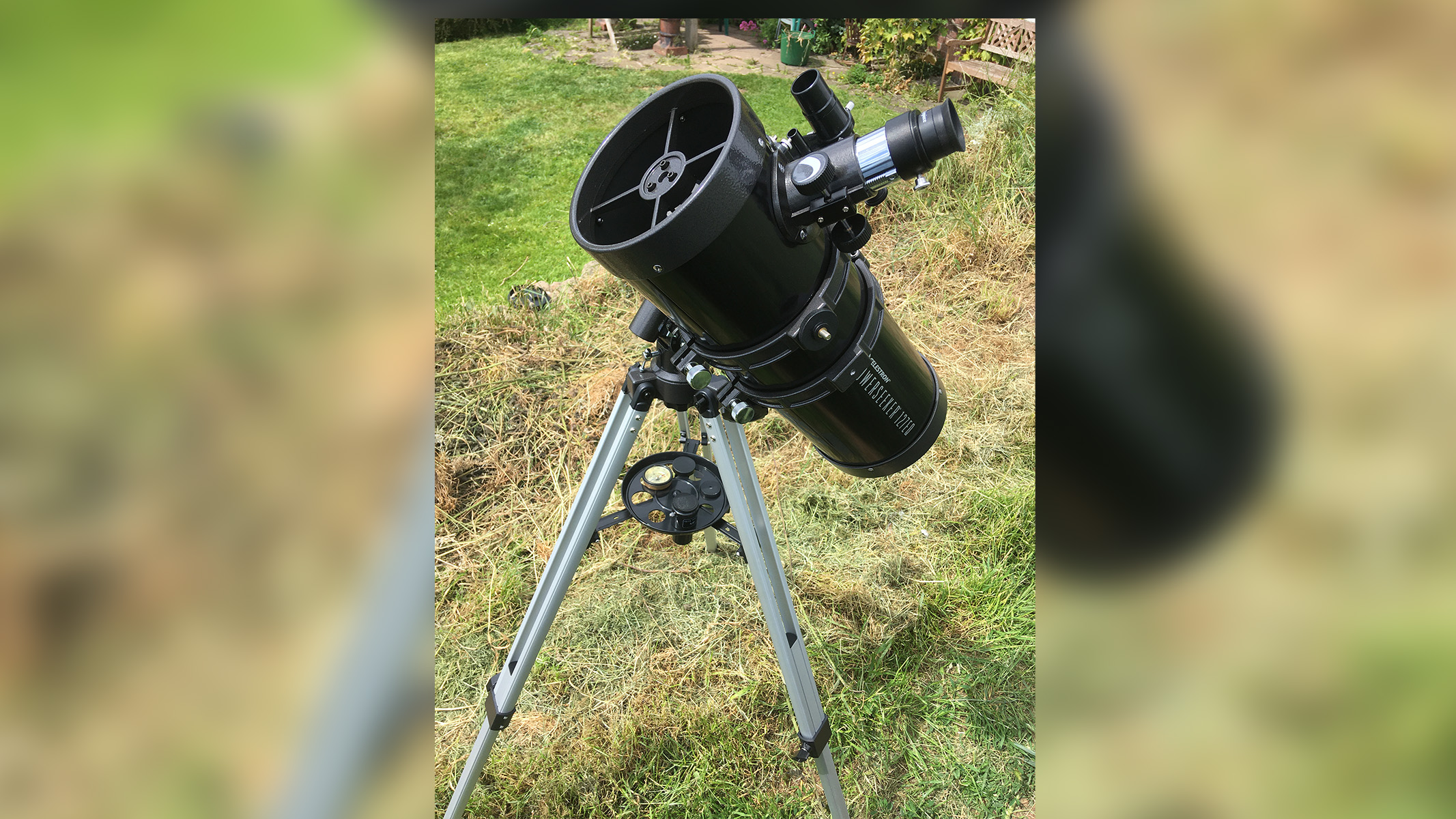
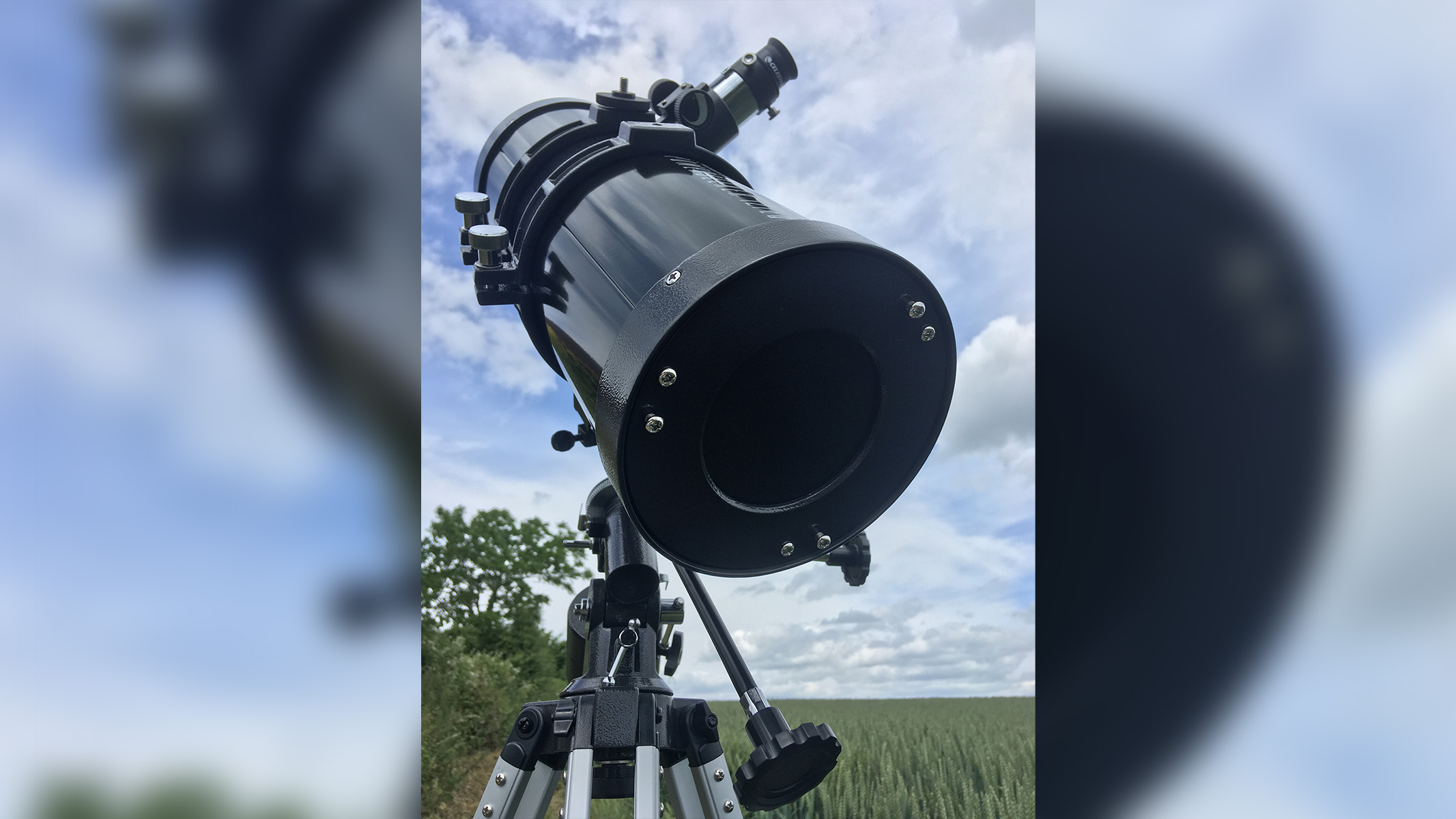
Specifications
Reasons to buy
Reasons to avoid
✅ You're a novice astronomer: this is Celestron's flagship model for entry-level telescopes, so definitely worth considering if you're starting out.
✅ You don't want a complicated setup: while it's not exactly ready to use out of the box, when we tested it we did find it could be set up in under an hour.
✅ You're on a strict budget: this model comes in under $200, and while some components reflect that, it does perform well for its price point.
❌ You're looking for quality accessories: the accessories included will enhance your viewing experience, but those included with other telescopes in this guide are of a higher quality.
❌ You're not starting out in astronomy: this is very much a beginner's telescope and other models in this guide offer a little more.
❌ You are willing to spend more on your next telescope: by this we mean more than what this telescope is worth, as there are other scopes in this guide that offer more but come with a higher price tag.
🔎 The Celestron PowerSeeker 127EQ is Celestron's flagship entry-level telescope. If you're starting out and on a budget, this is worth getting. However, if you've got experienced and a larger budget, other telescopes might offer you a little more. ★★★
The Celestron PowerSeeker 127EQ is a budget-friendly choice for beginners who are looking for a telescope with an equatorial mount and large aperture, though we'd recommend upgrading the eyepieces for the best optical experience. Its RRP is a little over $200 but it's normally discounted to $200 or below.
Aperture: This telescope offers a 5-inch (127mm) aperture, which is decent for this price point. That said, it does somewhat limit the use of the included 4mm eyepiece, which requires a bit more light-gathering ability for best results. The five-inch diameter reflector is frequently considered an ideal choice of astronomical telescope for the serious beginner, occupying a sweet spot of good light-gathering power with reasonable economy. The Celestron Powerseeker 127EQ is aimed firmly at this market and is the biggest and most powerful scope in the Powerseeker range.
Optics: Although it works fairly well for beginners, we found ourselves a little disappointed with the optics on this telescope in our Celestron PowerSeeker 127EQ review. It features a Bird-Jones Newtonian design, which means that it uses a spherical primary mirror with additional elements to correct the resulting distortion. The plus side of this is that it means it can fit 1000mm of focal length into a 400mm tube. But that also means it sacrifices some of the optical quality, especially when combined with an erecting eyepiece.
Technology: Those looking to upgrade their stargazing experience will enjoy the German equatorial mount on this scope, which needs to be aligned to the celestial pole prior to use. It also comes with a basic edition of Starry Night software, though this is only compatible with PC and Mac rather than with smartphones.
Accessories: Along with this telescope, you get a 20mm erecting eyepiece offering 50x magnification, a 4mm high-power eyepiece with 250x magnification and a 3x Barlow lens, as well as a lightweight aluminum tripod. In reality, the aperture and optics on this scope can't cater to the 4mm eyepiece combined with the 3x Barlow lens, so we'd recommend investing in 15mm and 9mm Plossl eyepieces and a more realistic 2x Barlow lens to get the best out of this telescope.
Quality of build: The German equatorial mount is well-engineered and we found the movements to be nice and smooth even with the slow-motion controls. The tripod also felt reassuringly stable, but some of the more minor elements like the accessory tray felt a little flimsy for our liking.
- Read our full Celestron PowerSeeker 127EQ review
Attributes | Notes |
|---|---|
Design | Bird-Jones Newtonian design. |
Functionality | Can be used for terrestrial viewing, eyepiece gives sharp views. |
Performance | Good, lightweight finderscope but color can be muted through the glass. |
The best budget telescope under 100 dollars

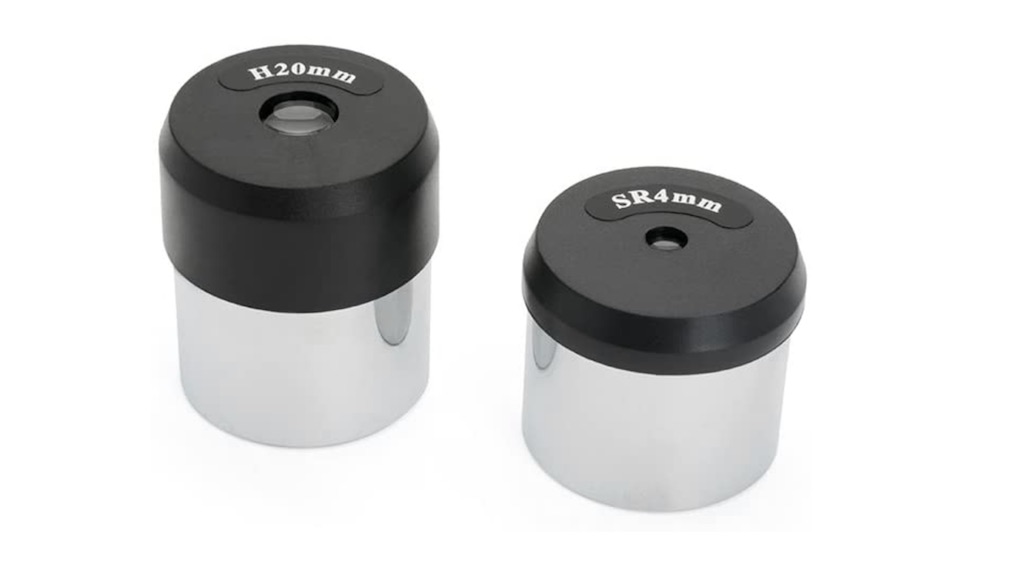
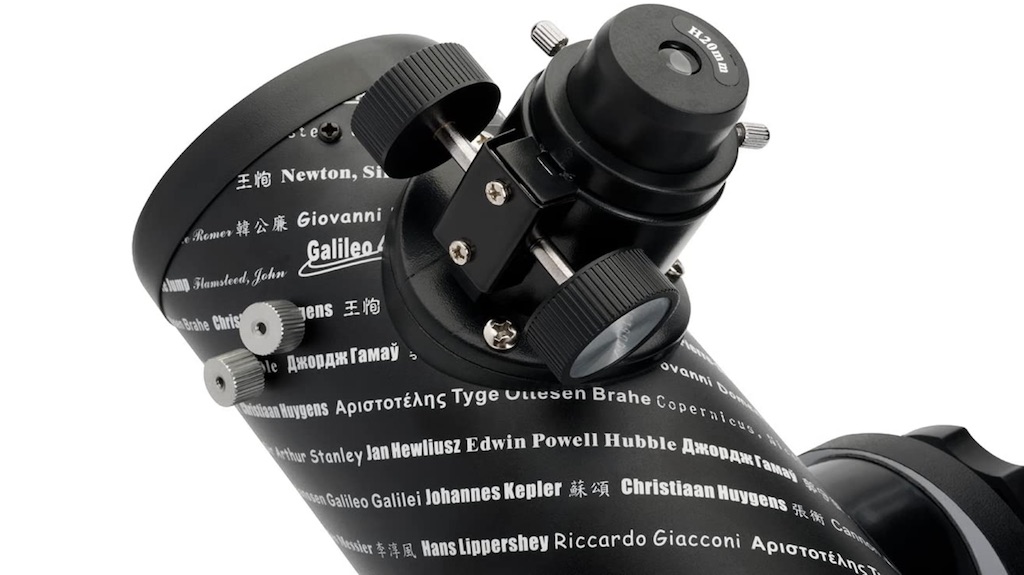
Specifications
Reasons to buy
Reasons to avoid
✅ You're looking to buy for a budding astronomer: It's portable, robust and easy to use. It won't give you the most spectacular views of deep space but it will capture the imagination of young astronomers.
✅ You want an easy viewing experience: It's easy to use and ready straight out of the box. The tabletop design means you just need a flat surface to view the stars.
✅ You're looking for a low-risk purchase: As this telescope comes in at under $100, it's among the cheapest quality telescopes you can get. So if you're not totally wowed by your stargazing experience, you haven't broken the bank in the process.
❌ You want to view deep space: This telescope is best suited for viewing the moon and the stars, thanks to its wide field of view. However, the design and the optics aren't suitable for stunning views of far-out galaxies and nebulas.
❌ You want crystal clear views: The views from this telescope aren't pin-sharp, but at this price point, you can't expect a telescope to compete with the very best models.
🔎 The Celestron FirstScope 76 is ideal for young stargazers or absolute beginners, as the name suggests. It's easy to use and robust, which is about as much as you can ask for under $100. The views can lack clarity but overall, it's a good choice at this price and because of that, it's a low-risk purchase. ★★★
As its name suggests, the Celestron FirstScope 76 is designed for younger astronomers, but we'd also venture to recommend it for adult beginners with a tight budget.
It's a great telescope for hobbyists who aren't looking to spend a lot of time or money on stargazing. Of course, given it costs under $100, it does not compete with leading models in terms of power, technology, quality and optics, but it does have plenty of merit and decent specs.
Aperture: This telescope has a 76mm aperture. While that doesn't let in enough light to view distant, deep-sky objects, it's good enough for getting great views of the moon and nearby stars.
Optics: In our Celestron FirstScope 76 review, we remarked it was a little difficult to collimate (i.e. aligning the mirrors within the tube) which is unfortunate, especially on a telescope aimed at beginners. But once you get past that, you'll find a fast focal ratio and a 300mm focal length, allowing for excellent views of the night sky. With the eyepieces supplied by Celestron, you won't get hugely close-up views of the surface of the moon, but you'll be able to see craters and get a feel for the rugged terrain along the terminator (the point where night meets day). The optics do not provide pin-sharp sights through the field of view since the focuser tube is quite loose, but even such basic observations are sure to delight those who have always wanted to get a closer look at the lunar surface without straining their eyes.
Technology: You won't find advanced technology here, but that's not a bad thing. As this scope is aimed at beginners, there's nothing complex to learn: it's simply a case of looking through the eyepiece and finding your target. We should add that it has a pleasingly fast focal ratio.
Accessories: The Celestron FirstScope 76 is pre-assembled and ready to go out of the box, so there aren't many additional accessories included. You do get two eyepieces (4mm and 20mm), but there's no finderscope. You'll need one to make the most of using the telescope, and thankfully, they're inexpensive to buy separately.
Quality of build: Considering its price point, this is a surprisingly sturdy telescope. We expected it to be quite flimsy but it feels nicely solid, giving the impression it's more expensive than it actually is. Since it's an ideal telescope for younger stargazers, it also means it can withstand the odd bump and knock.
- Read our full Celestron Firstscope 76 review
Attributes | Notes |
|---|---|
Design | Tabletop Newtonian reflector. |
Functionality | "Wow" factor for young viewers, loose focuser tube. |
Performance | Optics can struggle to pick out detail. |
Best for deep space observing
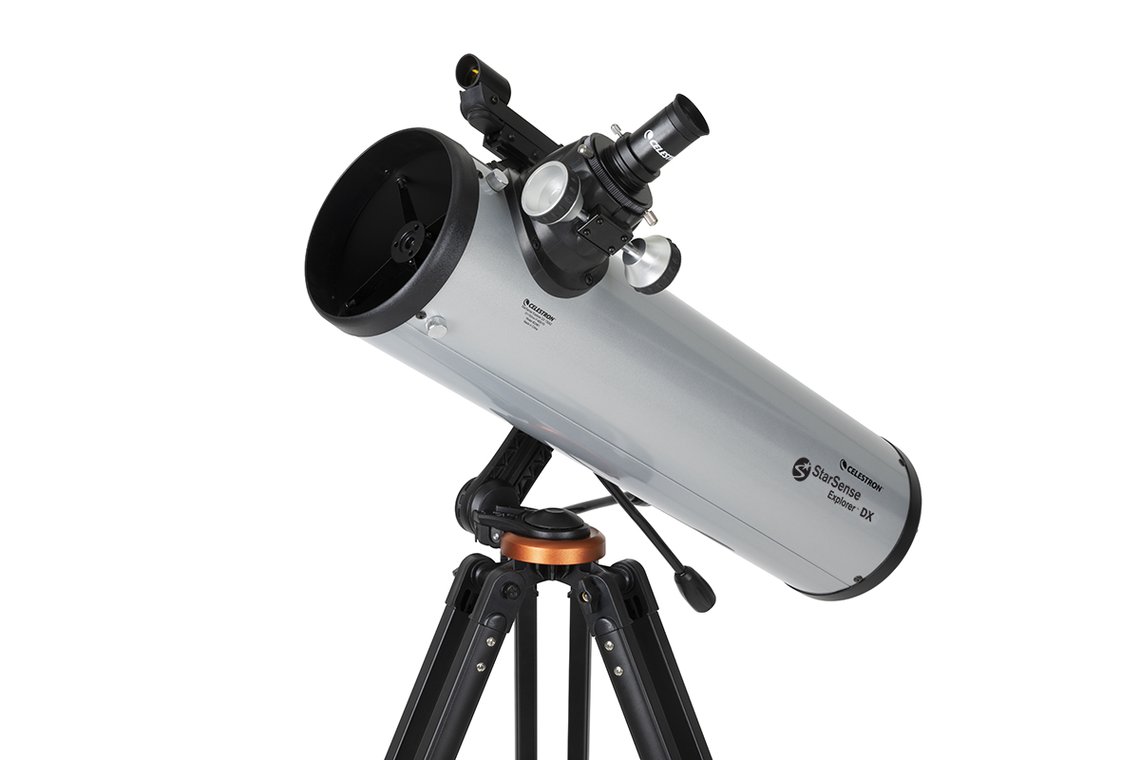
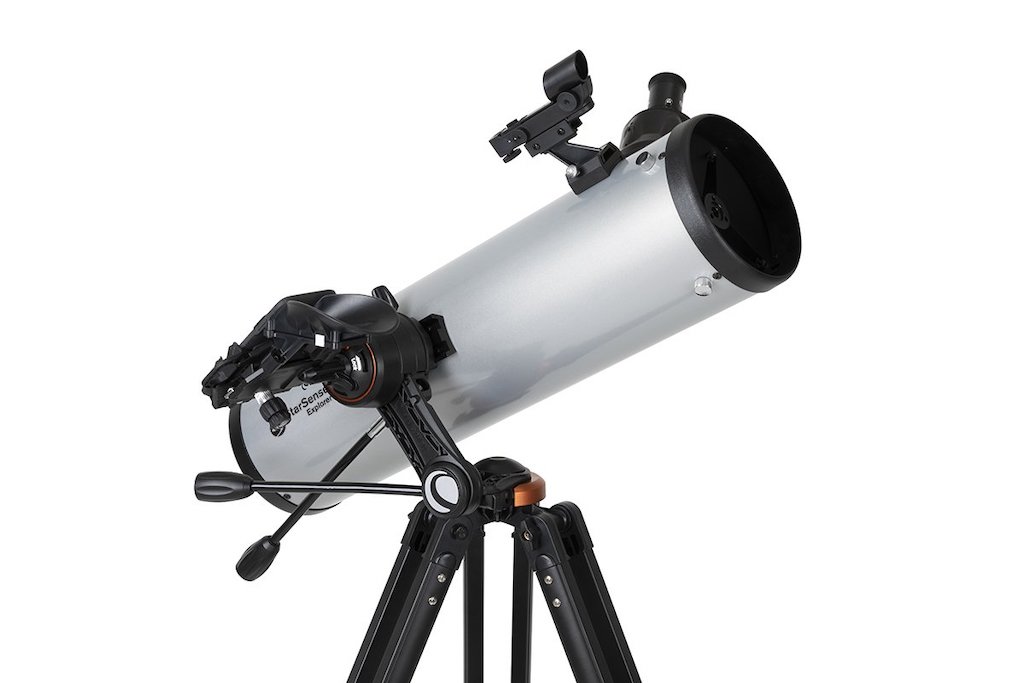
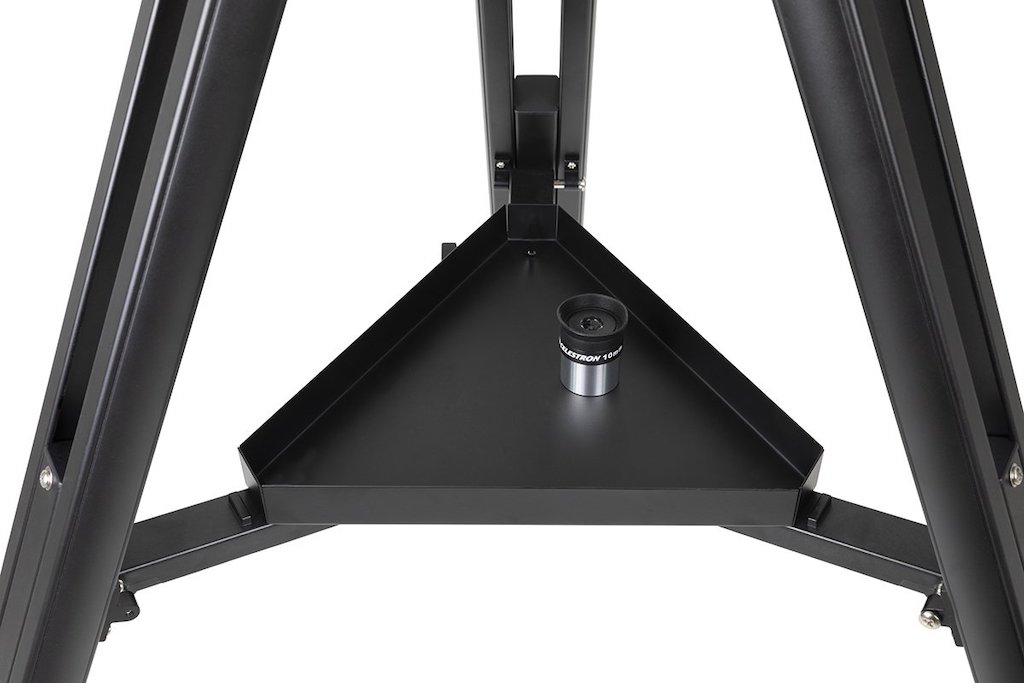
Specifications
Reasons to buy
Reasons to avoid
✅ You want to see deep space: This is one of few telescopes at this price point that will let you.
✅ You like the use of technology while stargazing: this telescope really shines when used alongside the StarSense app. The app has a huge database and will point you toward various visible night sky targets.
❌ You're a purist: by this, we mean someone who doesn't want the aid of technology and really doesn't mind spending time setting up their telescope.
🔎 Celestron StarSense Explorer DX 130AZ is genuine quality on a budget. It offers a fun, easy stargazing experience and is suitable for intermediate and novices alike. Beyond our solar system it'll let you see nebulae, galaxies and more.. ★★★★
The Celestron StarSense Explorer DX 130AZ easily tops our list of the best budget telescopes thanks to its generous aperture and beginner-friendly design that will make anyone's entry into stargazing a breeze. You can even use it to try your hand at a bit of basic astrophotography with your phone while you're at it.
Aperture: This telescope offers a 5.1-inch (130mm) aperture, which absorbs an excellent amount of light for the money. It's a fast telescope with a focal ratio of f/5 and a focal length of 650mm, enabling you to view planets, galaxies, nebulas and star clusters.
Optics: It has a Newtonian reflector design with mirrors that will need to be collimated before use (which you can do using the clear and simple instructions). In our Celestron StarSense Explorer DX 130AZ review, we were very impressed with the bright optics on this scope. With the help of a Barlow lens, we were able to get very sharp views of Mars, and could even pick out its polar ice caps.
Technology: The StarSense Explorer DX 130AZ comes with an alt-azimuth mount with dual-axis slow-motion controls for precise maneuvering. We loved the convenient StarSense app that comes with the telescope; it can be downloaded on iOS and Android and easily guides you to your desired targets. Simply plug your phone into the docking station on the telescope and the app will tell you where to move, making it really easy for beginners to get to grips with.
Accessories: You get a full package with this scope, including a red dot finder, star diagonal, tripod, accessory tray and two eyepieces: one 25mm offering 26x magnification and one 10mm offering 65x magnification. The only thing we'd recommend adding is a good quality Barlow lens to really let you eke out the details you can achieve with this aperture.
Quality of build: We found the tube and mount to be sturdy and well-built. The whole kit takes around 15 minutes to assemble and is lightweight and portable, making it a good choice for taking out in the field with you. We would advise playing around during the daytime however to get a feel for everything — it's much easier to resolve initial problems during the daytime than outside in the cold and dark.
Attributes | Notes |
|---|---|
Design | Newtonian Reflector. |
Functionality | Easy-to-use for navigation. |
Performance | Large aperture and good optics, performs well. |
Best for backyard moon and planet gazing


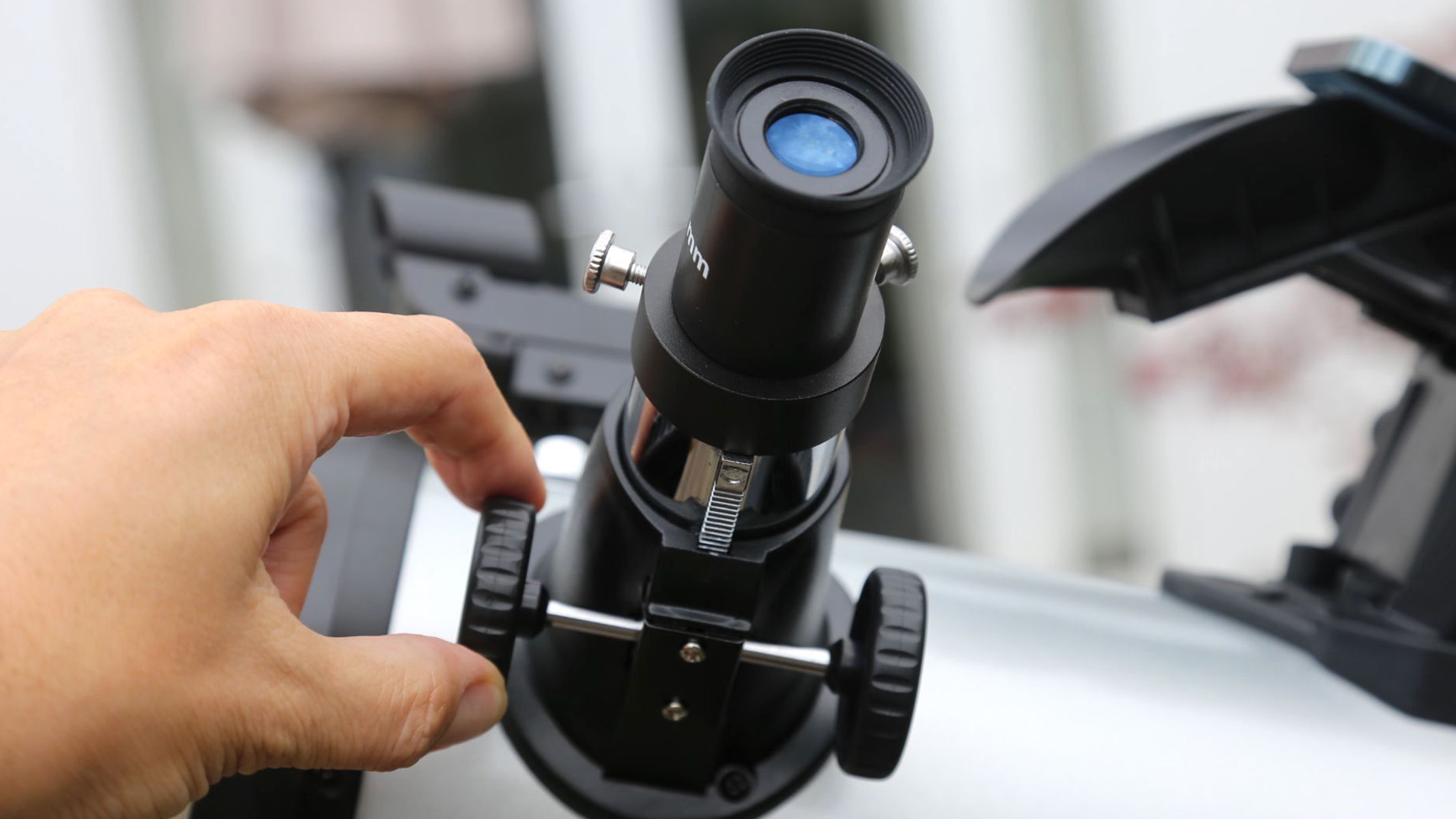

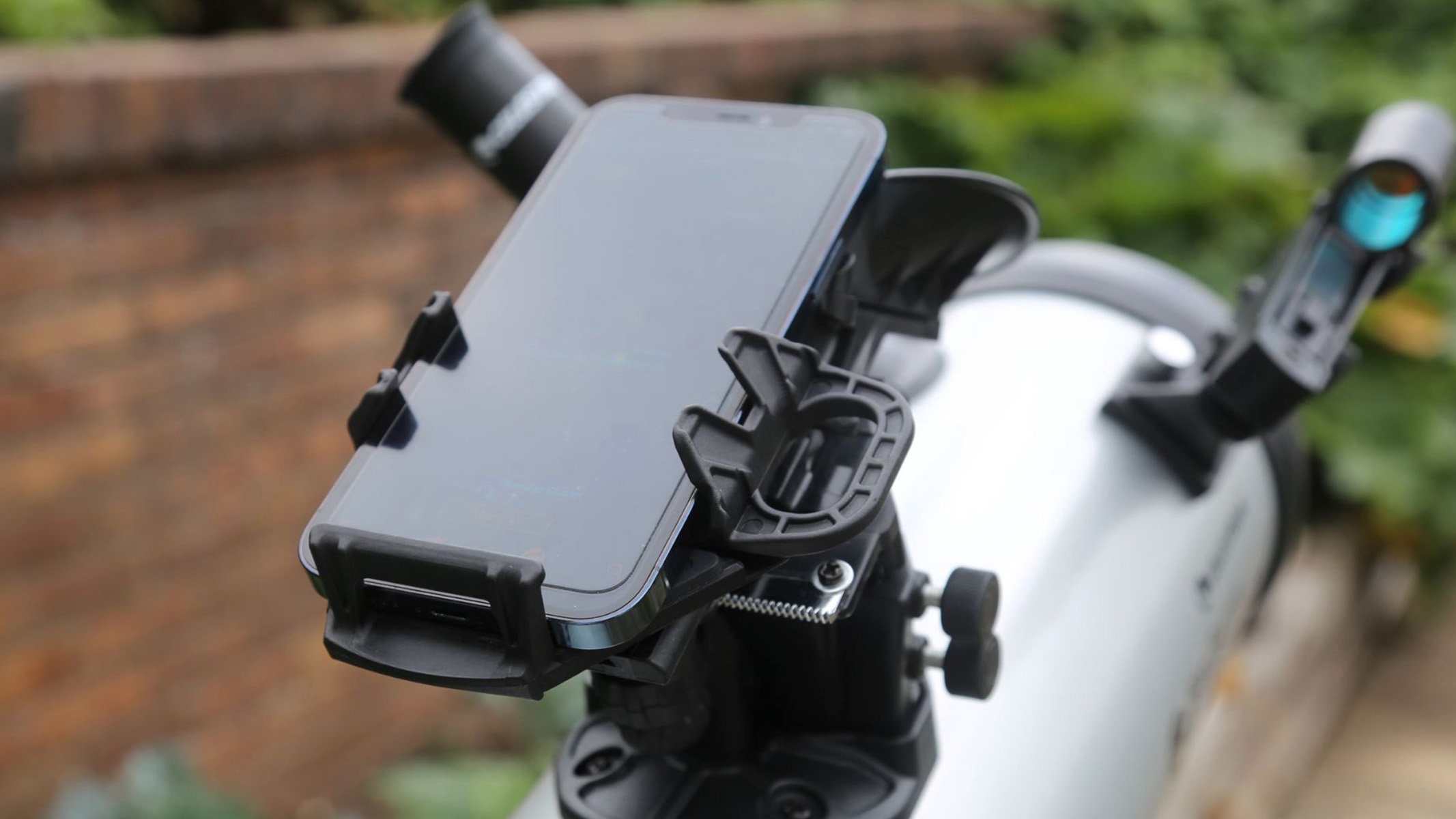
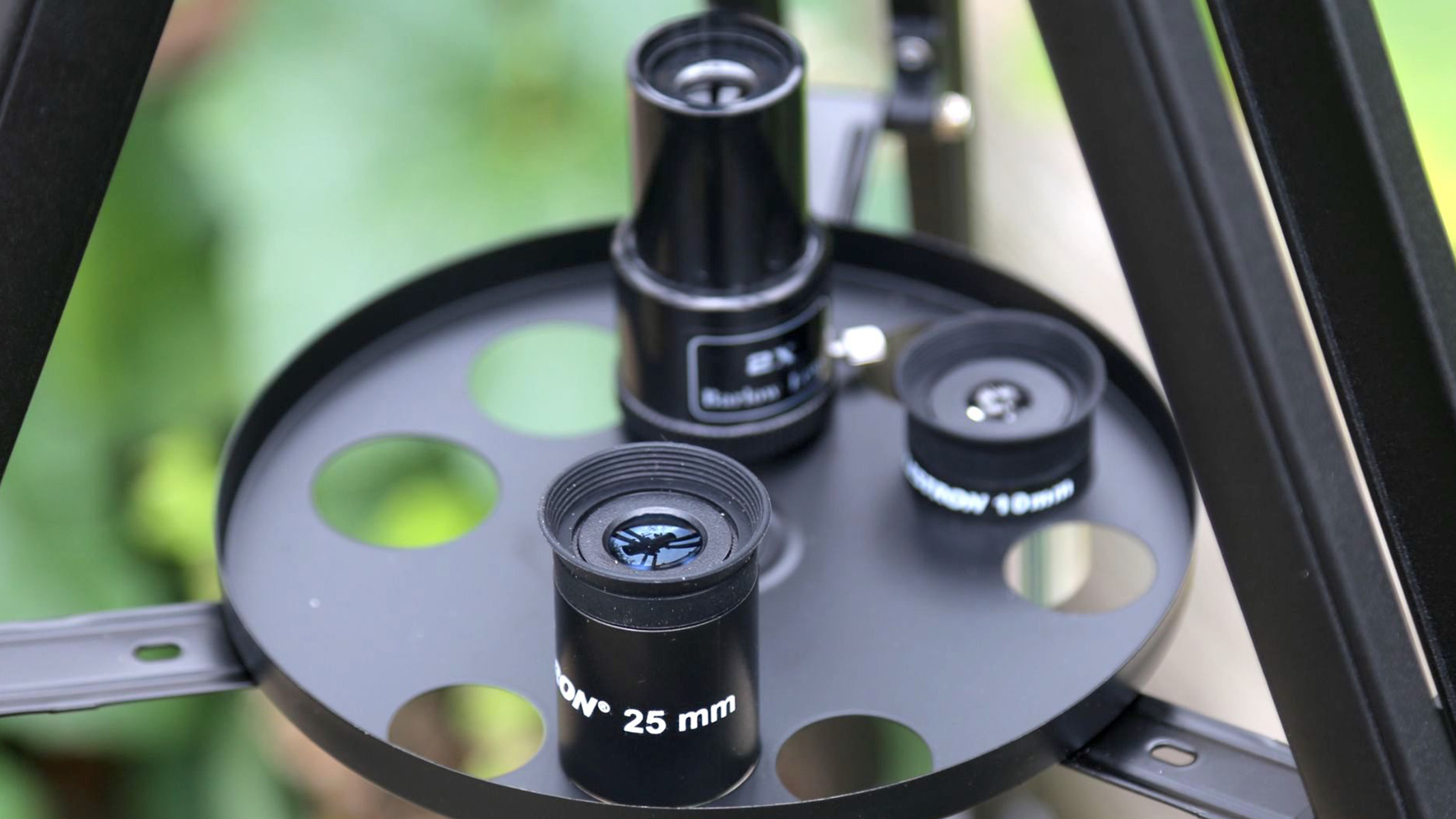
Specifications
Reasons to buy
Reasons to avoid
✅ You want to see the moon and planets: This small aperture telescope impresses with its views of planets. The Barlow lens is useful for great views of Saturn, Jupiter and the Moon.
❌ You want to see beyond the moon and planets: Although the app will point you anywhere in the sky, the optics are only suited to the Moon and planets.
🔎 The Celestron StarSense Explorer LT 114AZ is an entry-level scope that will give users decent views of the moon and planets, but it's not suited to deep sky targets. ★★★
In our review of the Celestron StarSense Explorer LT 114AZ we called it a decent option for beginners who want to observe the planets. If you're wanting to gaze into the deep sky, however, it's definitely not the best option for you.
Aperture: The aperture on the Explorer LT 114AZ is 114mm/4.5 inches. Coupled with its focal ratio of f/9, it favors the magnification of bright objects, which means you might not get much light and/or detail when viewing deep sky objects.
Optics: There's a Newtonian reflector within the Celestron StarSense Explorer LT 114AZ. It's easy enough to use, and viewing the likes of Jupiter and its moons was a cinch, but it doesn't have the best color rendition. There's also a noticeable amount of chromatic aberration, but for the most part views of the moon and nearby planets are sharp enough. We wouldn't recommend this telescope for deep sky viewing, however: We tried to view the Andromeda galaxy (M31) but could only see a small, faint blob.
Technology: Coming from Celestron's StarSense range, the Explore LT 114AZ is a 'push to' telescope that makes use of the technology in the StarSense app. While the telescope won't automatically navigate to targets laid out in the app, it will guide you there with ease, and we've found it to be a fantastic tool for helping budding astronomers learn their way around the night sky. Plenty of seasoned stargazers love it as it's fast, accurate and easy to use.
Accessories: This telescope comes with 25mm and 10mm Kellner eyepieces and a 2x Barlow lens. There's also a StarPointer, a red dot finderscope and an aluminum tripod.
Quality of build: Although the aluminum tripod is a pleasing touch, we found the quality of this telescope to be a little disappointing. The bearings were a little too stiff, and positioning the scope was a challenge at times. Better hand controls would have gone a long way.
- Read our full Celestron StarSense Explorer LT 114AZ review
Attributes | Notes |
|---|---|
Design | Lightweight, but tripod is flimsy. |
Functionality | Excellent StarSense app. |
Performance | Best for viewing the moon and planets |
Best for smartphone astrophotography
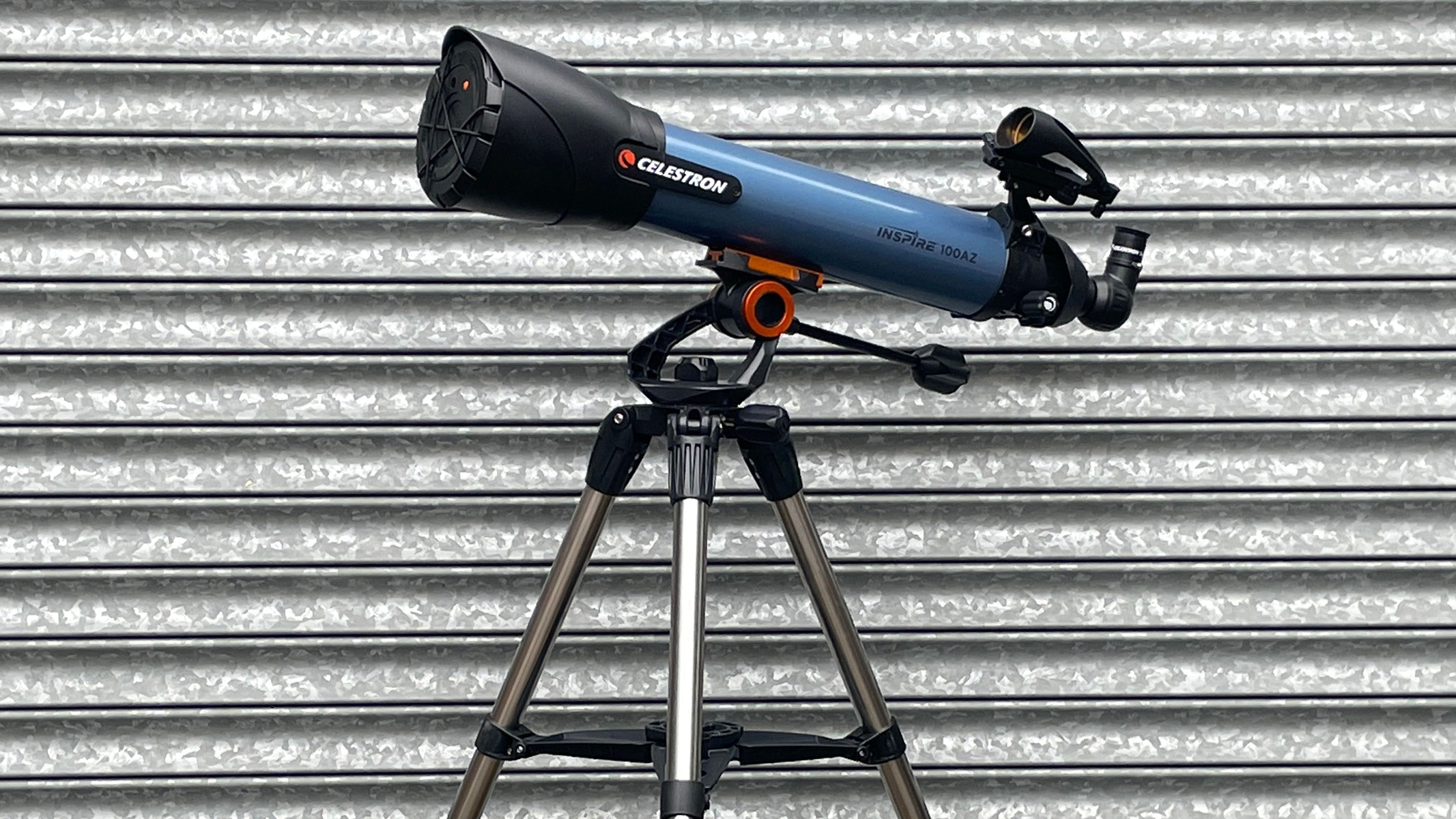
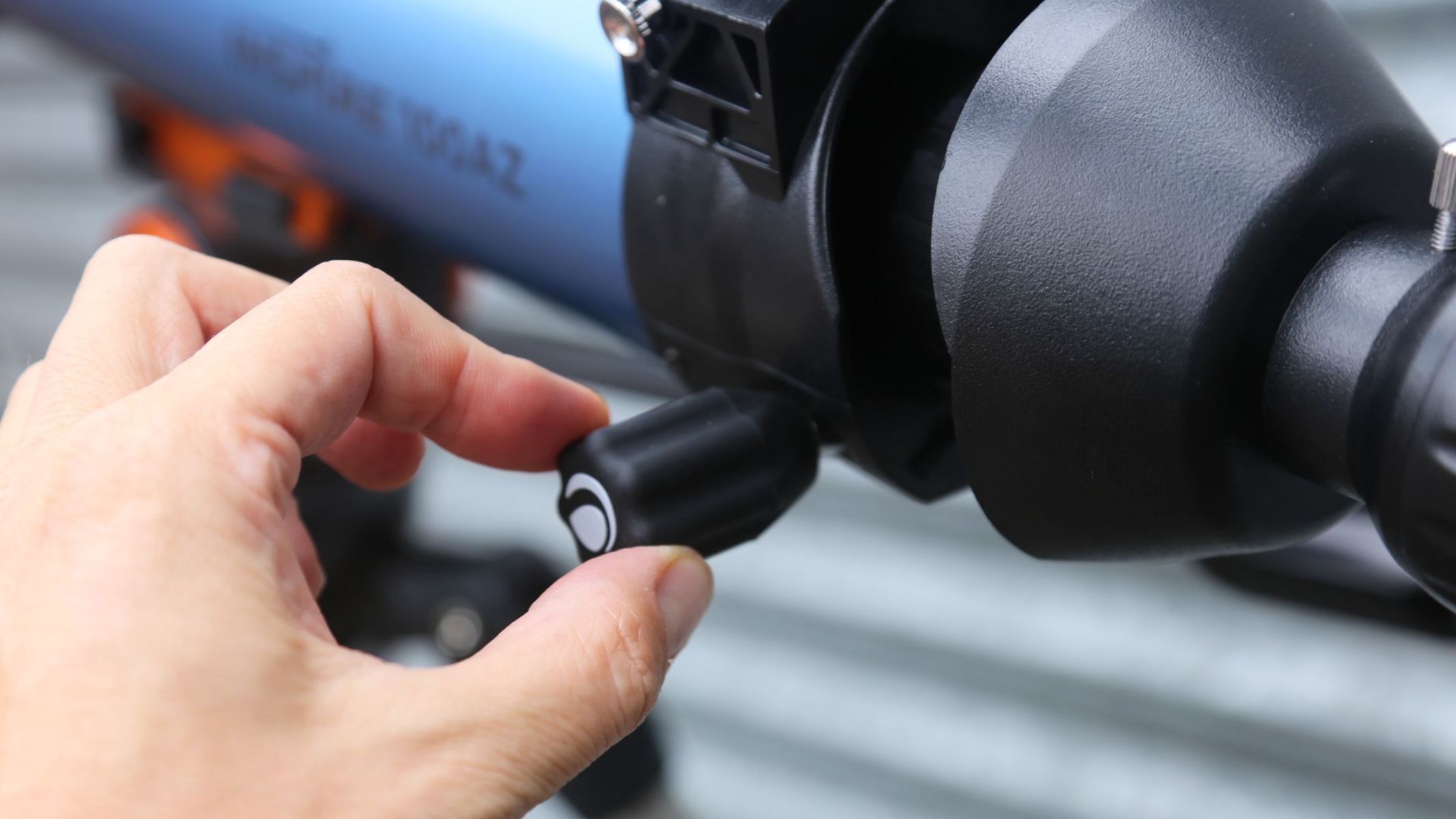
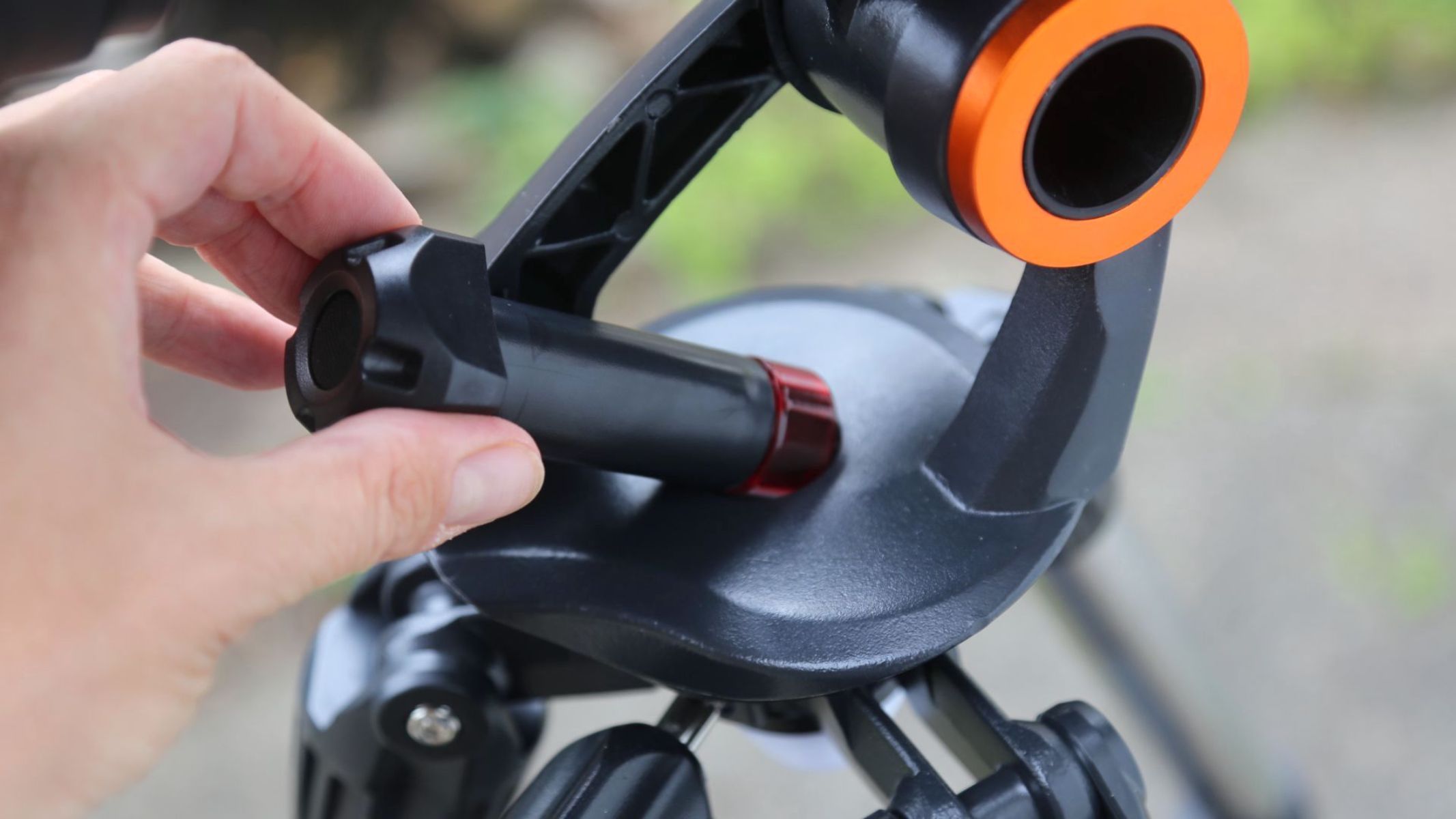
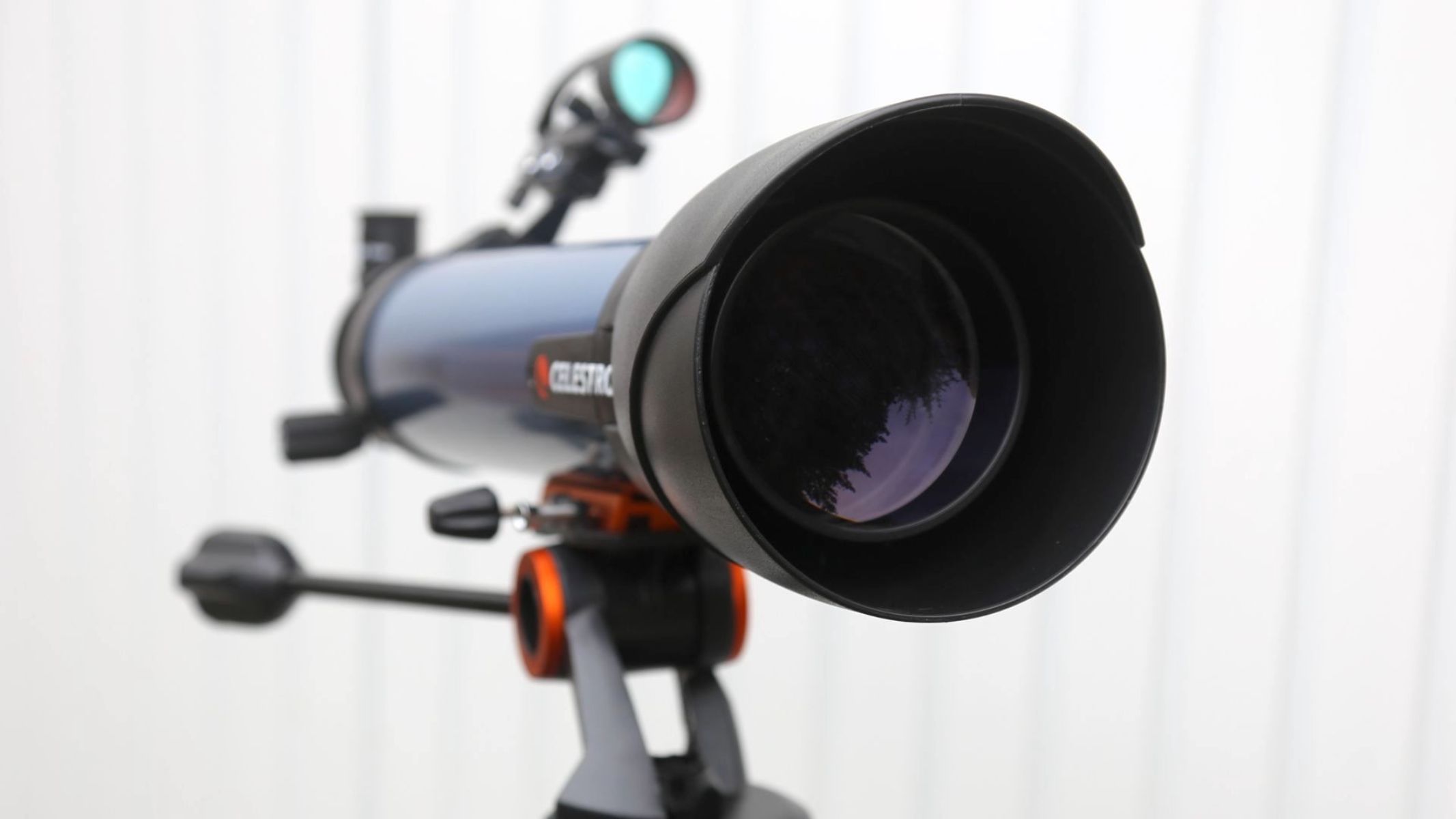
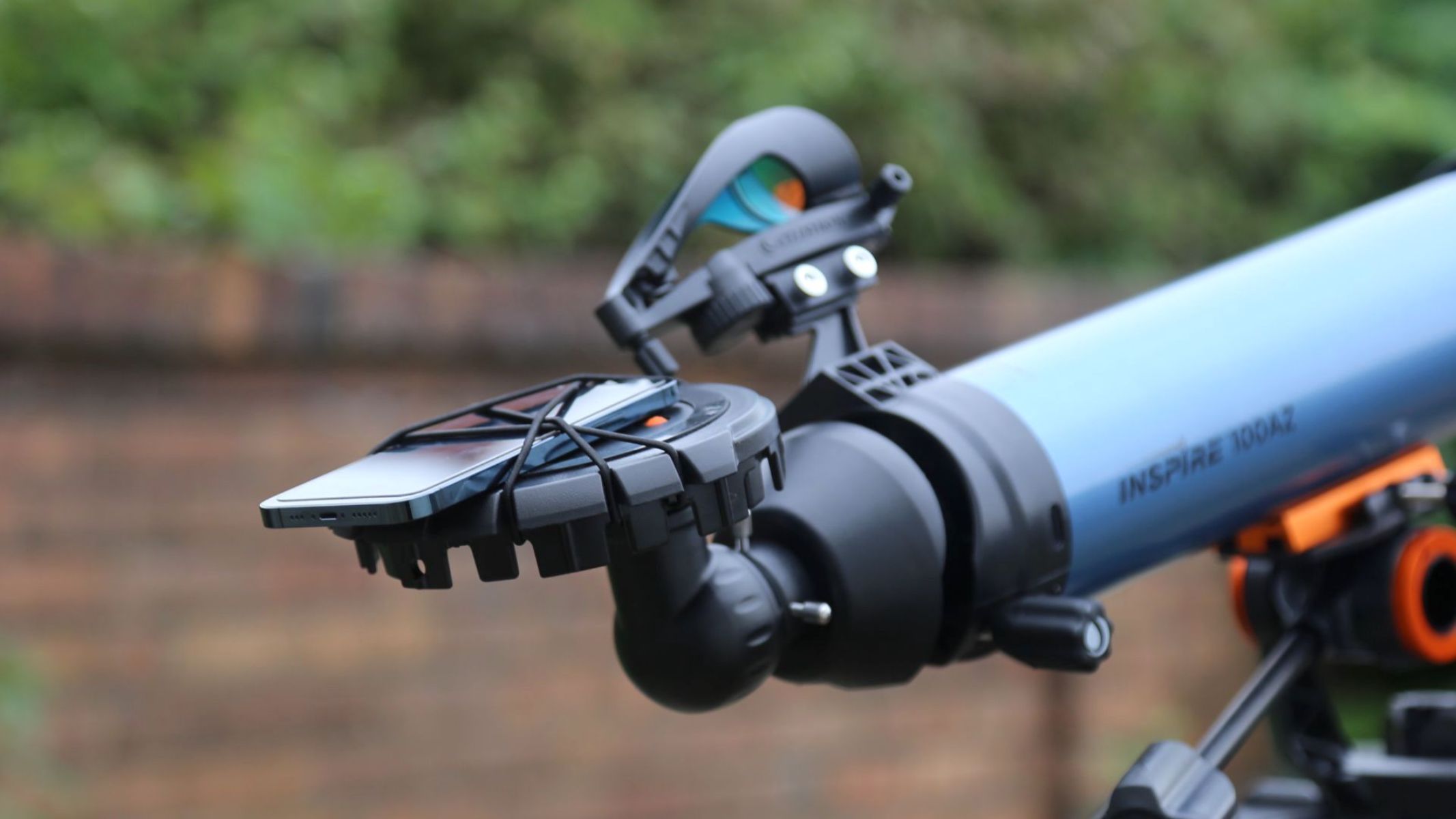
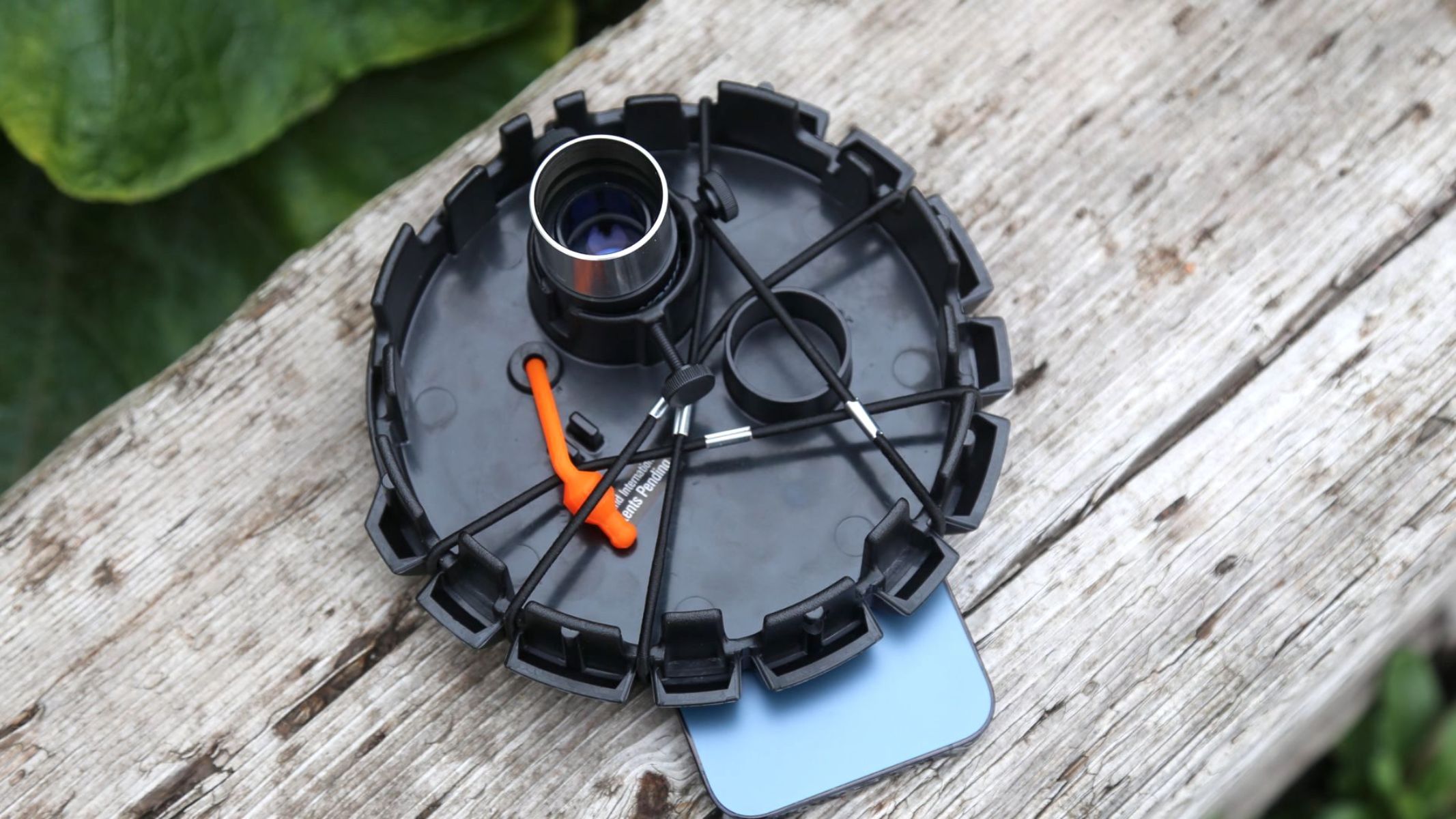
Specifications
Reasons to buy
Reasons to avoid
✅ You want to dabble in smartphone astrophotography: The innovative lens cap turns into a smartphone holder.
❌ You want to observe the Sun: The unusual hood design can't take solar filters, so it should never be used to look at the sun.
❌ You have limited space for a scope at home: It has quite a large footprint, but it is easy enough to set up and pack down in between sessions.
🔎The Celestron Inspire 100AZ is an appealing solution if you want to view the moon and planets but don't want to spend big. ★★★★
For beginners and young astronomers, there's some fun to be had with the Celestron Inspire 100AZ. It's great for viewing the moon and planets with, but probably not the best choice if you'd like to gaze deeper into space.
Aperture: The relatively short focal length of 660mm means the Celestron Inspire 100AZ isn't great for viewing more than the moon and planets — though we did manage to get a decently clear view of Andromeda (M31). If you want to go further into deep space, though, you're going to need a wider aperture than the 4 inches/100mm offered here.
Optics: The optics in the Celestron Inspire 100AZ aren't perfect: We've found there to be some chromatic aberration (i.e. purplish halos) in some instances, but it's not as obvious as in other budget telescopes we've tested. If it's not something you're overly sensitive to, you'll still be able to enjoy some bright and clear views of our solar system using the 20mm eyepiece included in the set. Sadly, we found the 10mm eyepiece to be a little more blurry.
Technology: There's a lot of things we like about the Inspire 100AZ. Its alt-azimuth mount is very to use, and its tripod is easy to put up and down, which is a nice touch particularly for younger users. The built-in red light is useful for finding your accessories in the dark, too. Perhaps the best feature, though, is the smartphone mount: You can use the dust cap to align your phone's camera with the eyepiece, allowing you to take some great astrophotography shots.
Accessories: In the box you get 10mm and 20mm Kellner eyepieces, the dust cap smartphone mount, a StarPointer Pro red dot finder, a 90-degree image erect diagonal and a large tripod.
Quality of build: In our Celestron Inspire 100AZ review, we noted this telescope is a cut above most of its rivals of a similar price. Its build quality, particularly its tripod — which includes some neat features, like an accessory tray — is much better than expected. It's let down a little by its alt-azimuth mount, however, which lacks the amount of precision we'd like: It's a little stiff to swivel left and right, and we found it to have some unwanted recoil.
- Read our full Celestron Inspire 100AZ review
Attributes | Notes |
|---|---|
Design | Panhandle movement, achromatic lens. |
Performance | Excels with lunar views, slight chromatic aberration. |
Functionality | Easy set-up and take-down, built in smartphone adapter. |
- Read our full Celestron Inspire 100AZ review
Best for children
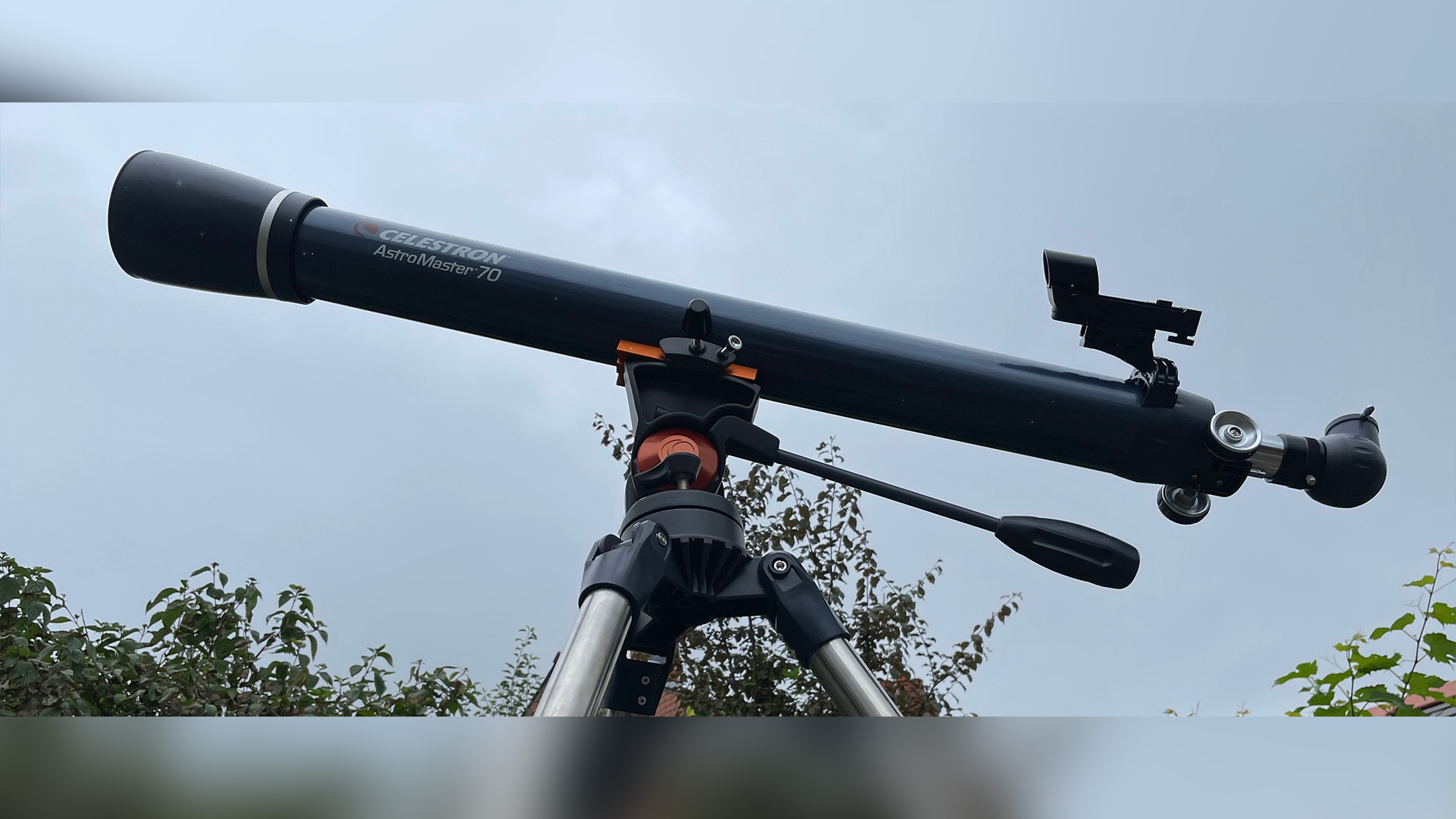
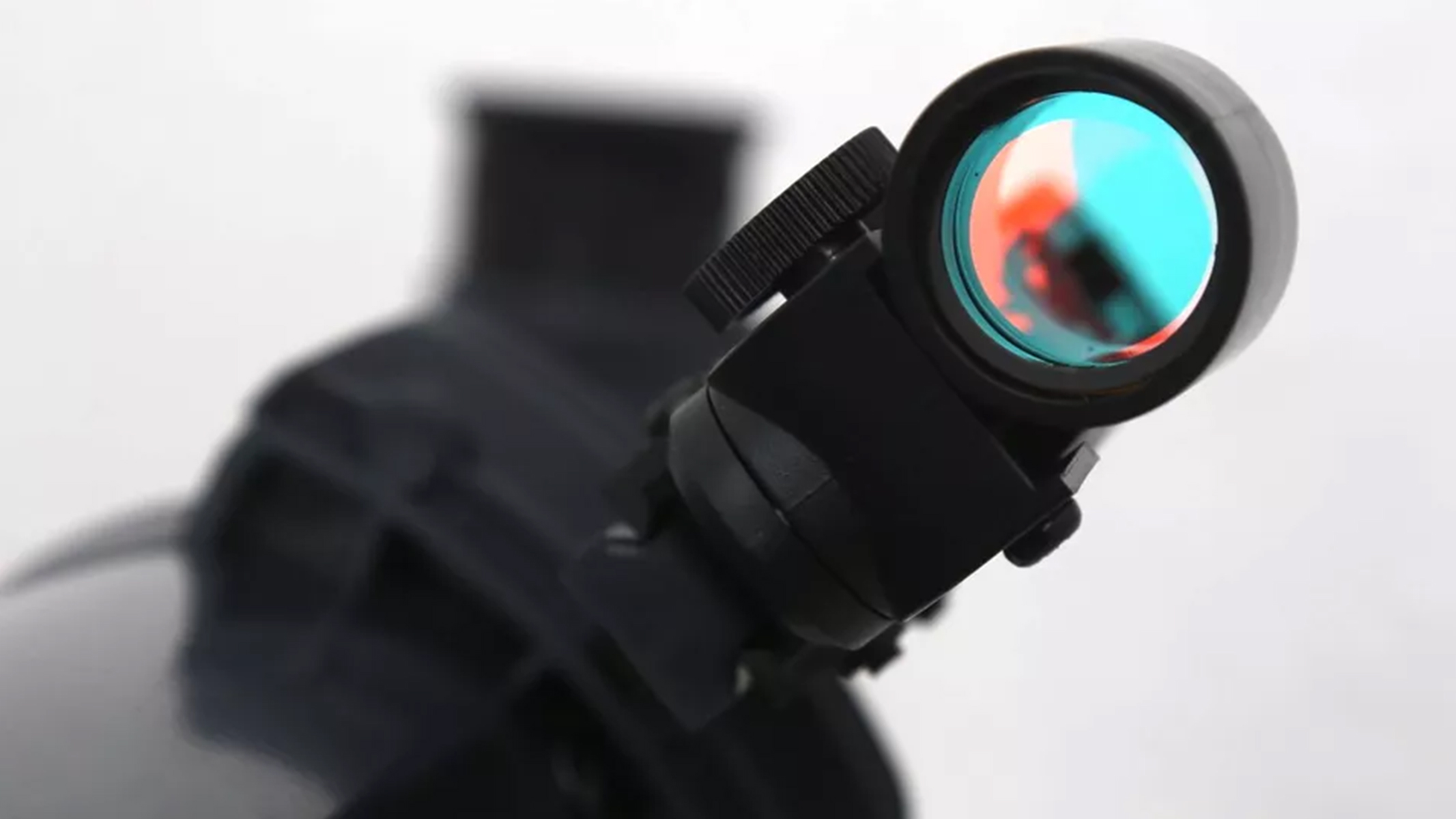
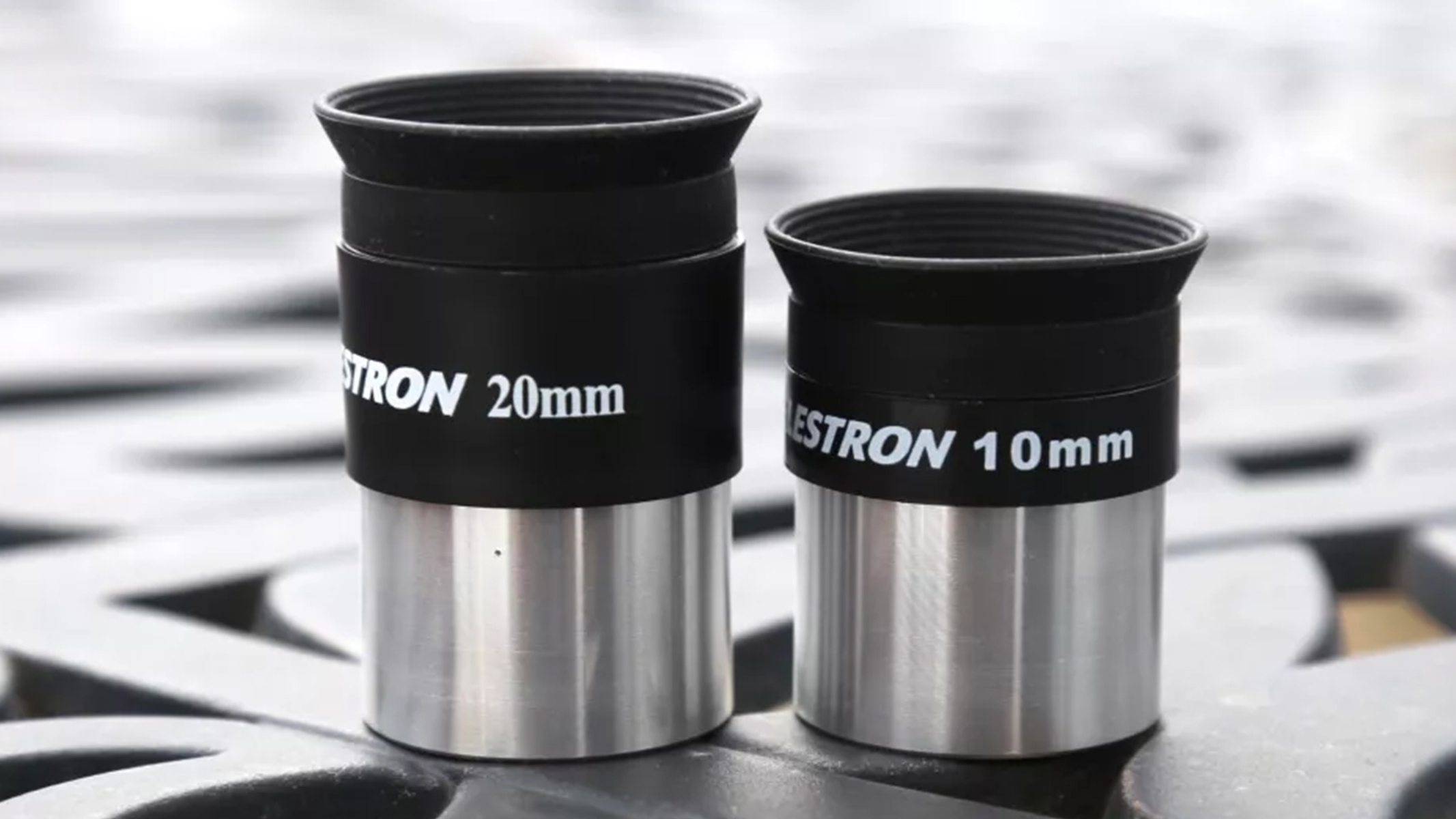
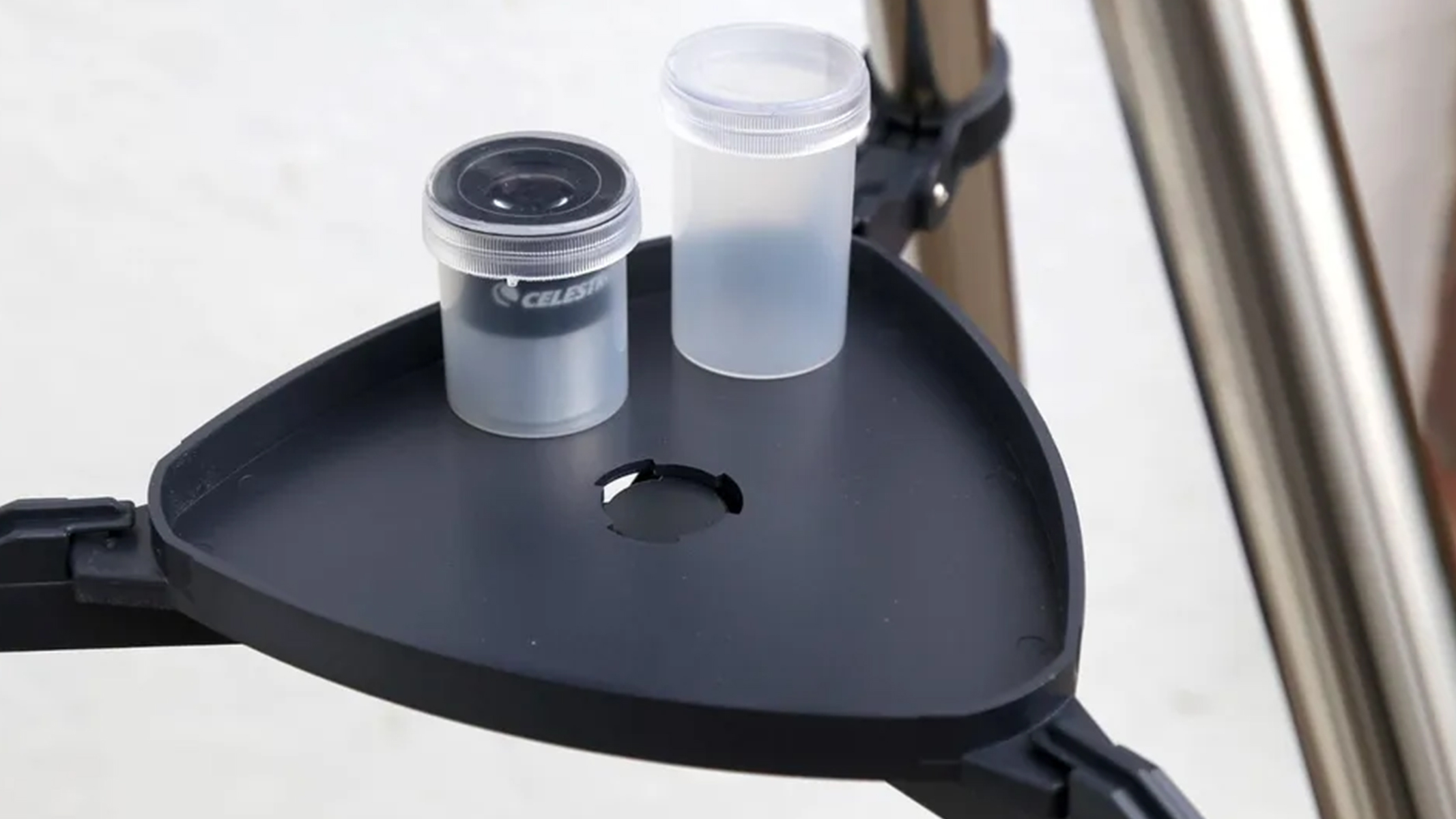
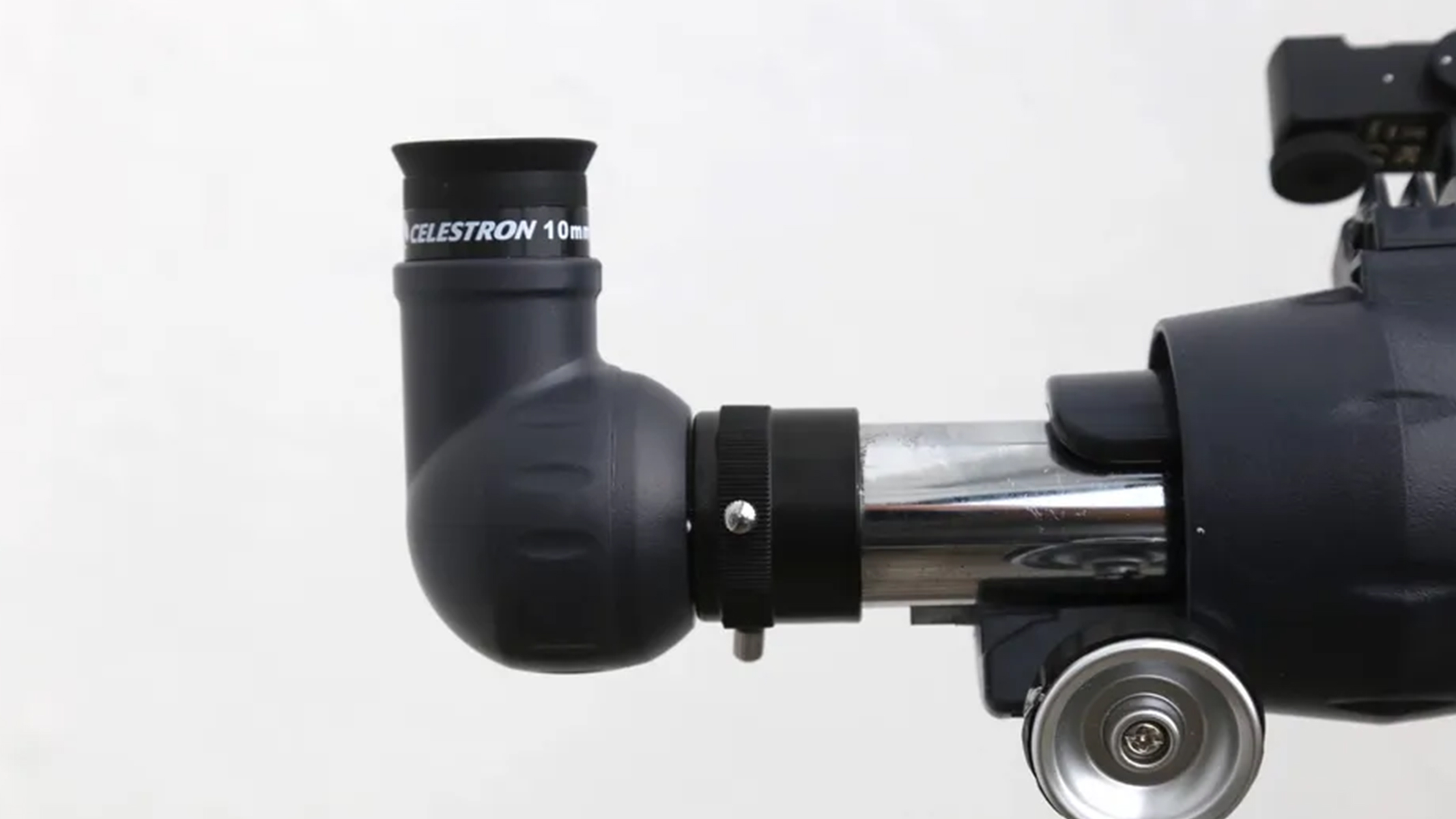
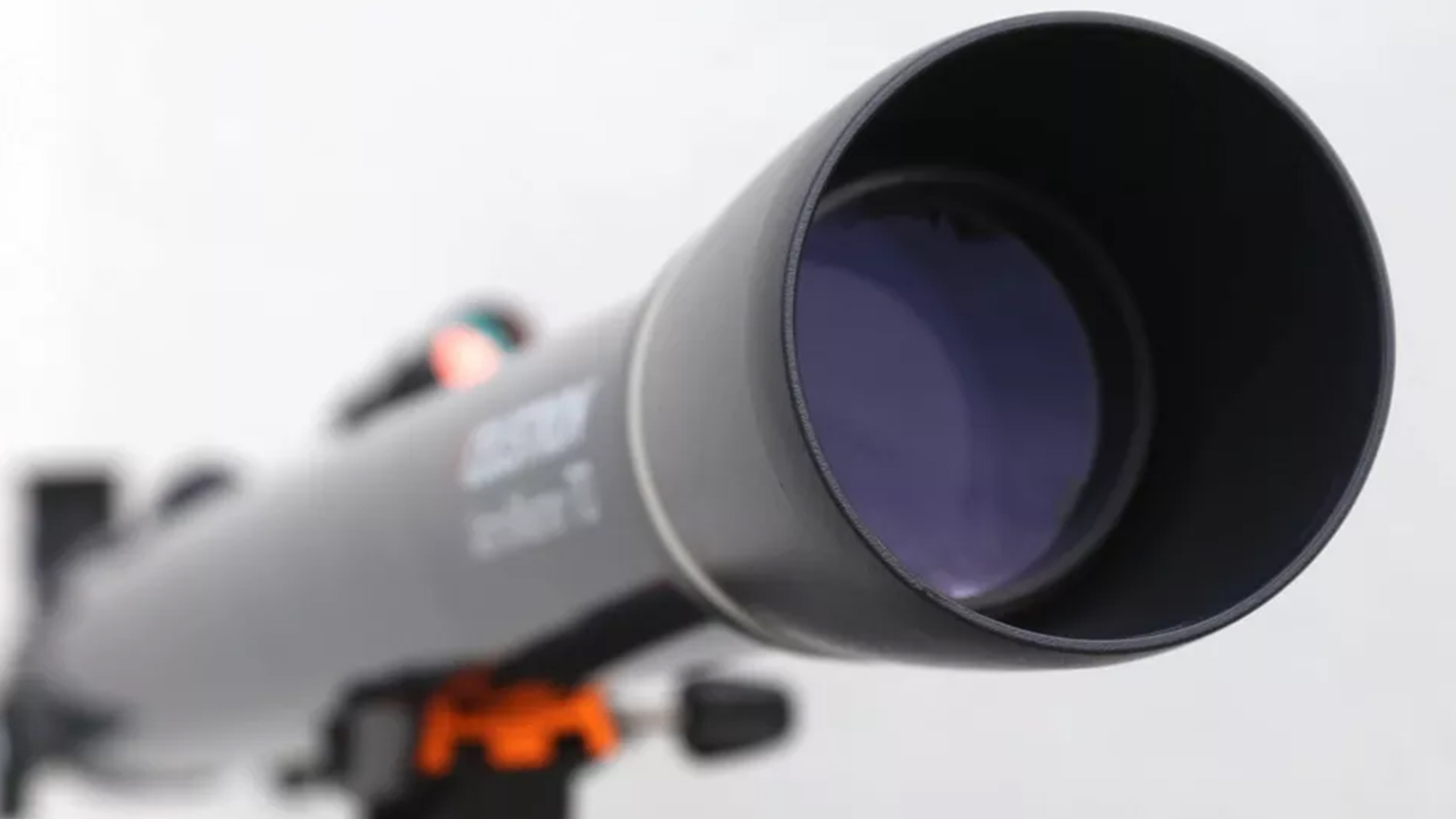
Specifications
Reasons to buy
Reasons to avoid
✅ You have a small budget: This telescope is very affordable, but the quality matches the low price point.
❌ You want something that's going to last: It won't impress enough to hold the interest of beginners for a long time.
🔎 Celestron AstroMaster 70AZ: This lightweight refractor uses its relatively long length to produce natural-looking views of planets and the moon, but for anything else it's underwhelming. ★★★
The Celestron AstroMaster 70AZ is aimed at beginners who want to get natural-looking views of the Moon, planets and other objects within our solar system. Its affordable price makes it a good choice for kids and newcomers to astronomy, but its scope beyond that is limited.
Aperture: The Celestron AstroMaster 70AZ contains a 2.7-inch/70mm achromatic refractor which will give you bright views of objects within our solar system and allow you to spot the different planets, but it won't reach much beyond that.
Optics: Many other achromatic refractor telescopes aimed at beginners suffer from chromatic aberration — an optical effect that presents you with fuzzy halos of color around the edges of objects. But in our review of the Celestron AstroMaster 70AZ, we found that it overcomes this by using its unusually long length and focal ratio of just below f/13 to show you the planets in their natural colors.
However, while it is highly beneficial when looking at bright and nearby objects, this focal ratio makes deep-sky objects appear quite dim and poorly defined. As such, you should only consider this telescope if your main interests lie within our solar system.
Technology: This is a manual telescope without the bells and whistles of app-powered telescopes and the like. It's a great choice if you want a more traditional stargazing experience, but we must mention its impressive pan handle and clutch which make securing a position and adjusting easy to do. It's an unusual (but very welcome) feature at this price point.
Accessories: We were very impressed with the complete package of accessories included with the AstroMaster 70AZ. In the box you'll find a tripod, a StarPointer finderscope and an image diagonal. There are also two Kellner eyepieces: 20mm (45x magnification) and 10mm (90x).
Quality of build: Although the tripod is very solid, the mechanical build quality means that the AstroMaster 70AZ isn't very easy to aim, and the overreach and recoil make it difficult to keep targets within the eyepiece when you find them. This is not at all uncommon on budget telescopes, but it may frustrate beginners who are trying to get to grips with a new hobby.
- Read our full Celestron AstroMaster 70AZ review
Attributes | Notes |
|---|---|
Design | Lightweight design. |
Performance | No 'false color', but dull deep-sky objects. |
Functionality | Difficult to lock on to targets. |
Best EQ mount for young skywatchers
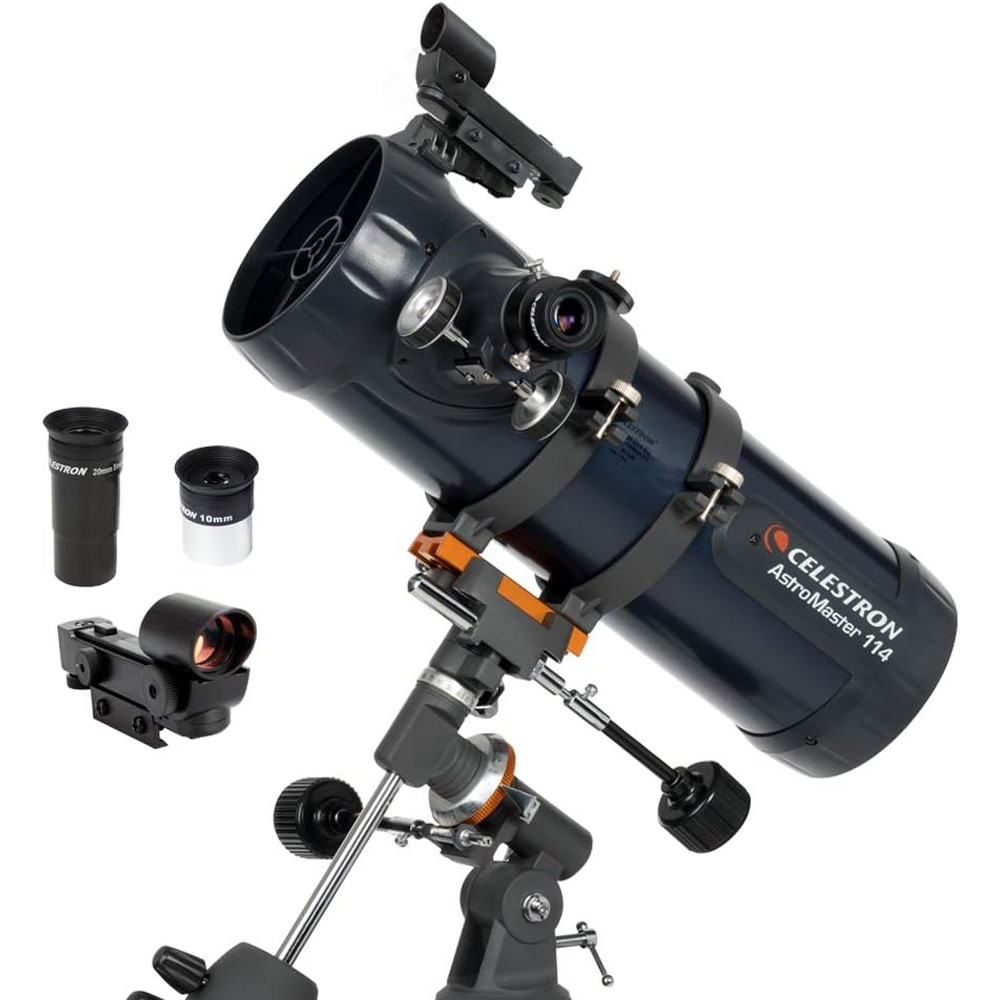
Celestron AstroMaster 114EQ
Our expert review:
Specifications
Reasons to buy
Reasons to avoid
✅ You want stunning views of the moon and planets: The 5-inch aperture will allow in enough light for fantastic views of the moon and neighboring planets.
❌ You're purchasing for very young stargazers: The EQ mount could prove tricky and frustrating.
🔎Celstron AstroMaster 114EQ: You want an inexpensive, solidly built EQ scope that's suitable for surveying planets, moons and some deep space objects. ★★★★
While we wouldn't recommend an EQ mount for absolute beginners, older children will get a lot out of the Celstron AstroMaster 114EQ. It comes with everything you need to get stargazing, it's solidly built and offers good quality viewing.
Aperture: At 114mm, the Celestron AstroMaster 114EQ will gather in plenty of light, enough to allow for viewing of some but not all deep space objects.
Optics: The Celestron AstroMaster 114EQ boasts the optical quality to delivery detailed images of the moon, planets and other objects though you shouldn't expect super-sharp images.
Technology: As a more traditional telescope, you won't find much technology within the Celestron AstroMaster 114EQ. There's no motorized mount or smartphone integration.
Accessories: It comes with everything you'll need to get started stargazing, a a 20mm and 10mm eyepiece, a finderscope and a download of Celestron's Starry Night software.
Quality of build: The Celestron AstroMaster 114EQ is solidly built, both tripod and tube, with reviewers remarking how sturdy it is.
Attributes | Notes |
|---|---|
Design | Sturdy but still portable |
Performance | Aperture large enough for basic deep sky observation |
Functionality | No tech to speak of, more of a traditionalist scope. |
Best smart telescope
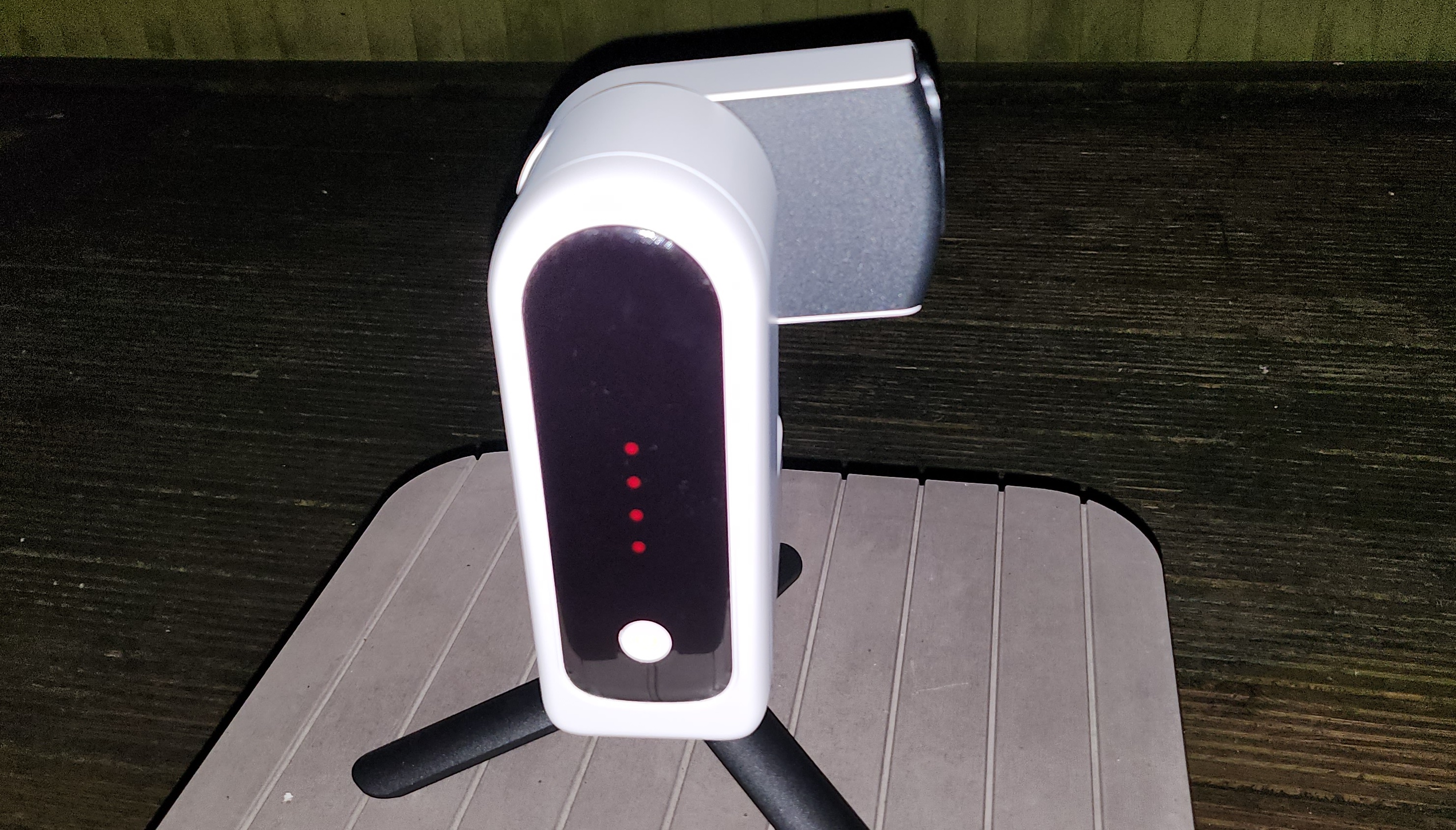

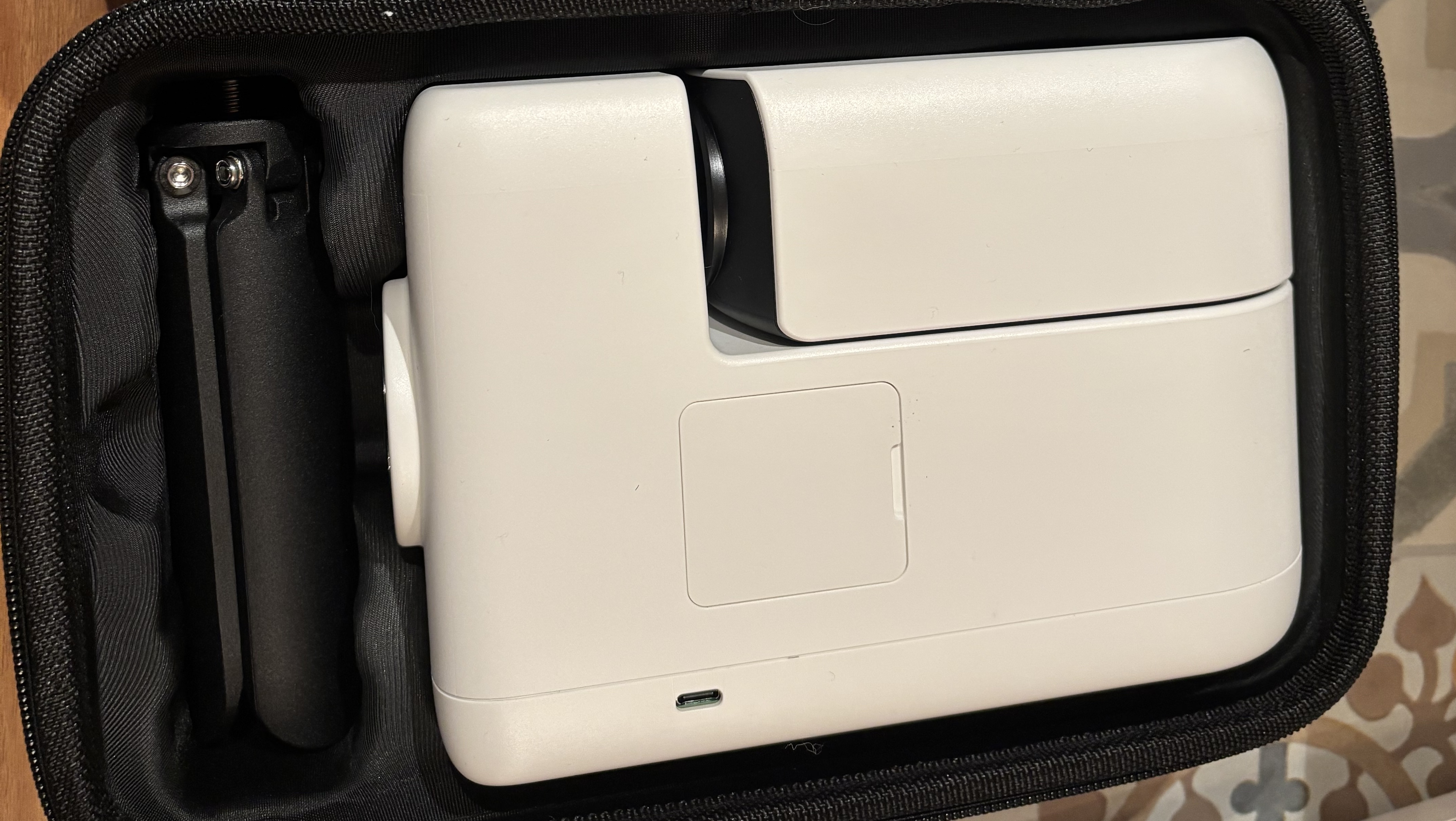

Specifications
Reasons to buy
Reasons to avoid
✅ You want ease of use: This smart telescope is easy to set up and use, allowing you to be viewing stars and night sky objects within minutes.
✅ You want an affordable smart telescope: You can have this smart telescope without breaking the bank while also getting great views and images of the night sky.
❌ You want high-quality images: While the Seestar S30 captures good photos of the night sky, for those wanting the best image quality, you'll want to look elsewhere.
❌ You want detailed views: Due to the small aperture, the resolution of the images are lower than other smart telescopes leading to less detailed views.
🔎 ZWO Seestar S30 This budget-friendly smart telescope is affordable, compact and portable as well as super easy to use — you couldn't ask for more ★★★★
The ZWO Seestar S30 is an affordable smart telescope that offers great views of the night sky while being quiet and quick at finding the objects. It's ideal for the whole family to use, and coming in under $400, it is often an option for many.
Aperture: With a small aperture at 1.18-inch (30 mm), the Seestar S30 gathers enough light to capture great photos of the night sky. While a larger aperture would allow for more detailed views, the Seestar S30 doesn't disappoint, especially for such an affordable smart telescope.
Optics: The Seestar S30 uses an apochromatic triplet refractor which allows for amazing views of the night sky, including fantastic colored pictures of galaxies and in particular, nebulae.
Technology: The alt-azimuth mount allows the aperture arm of the Seestar S30 to move in all directions; up, down, left and right to ensure you don't miss any part of the night sky. Of course, being a smart telescope, you also have the accompanying app that controls how you find the night sky objects.
Accessories: This smart telescope comes with a carry case, solar filter and tripod. You will need to download the accompanying app. No extra eyepieces are available.
Quality of build: The Seestar S30 is a solid build that operates so quietly when searching for objects. We were impressed by this and the speed in which it found objects.
Attributes | Notes |
|---|---|
Design | Solid and portable |
Performance | Great images of the night sky. Quiet and fast |
Functionality | User-friendly app and easy to get set up |
Best premium smart telescope around $500
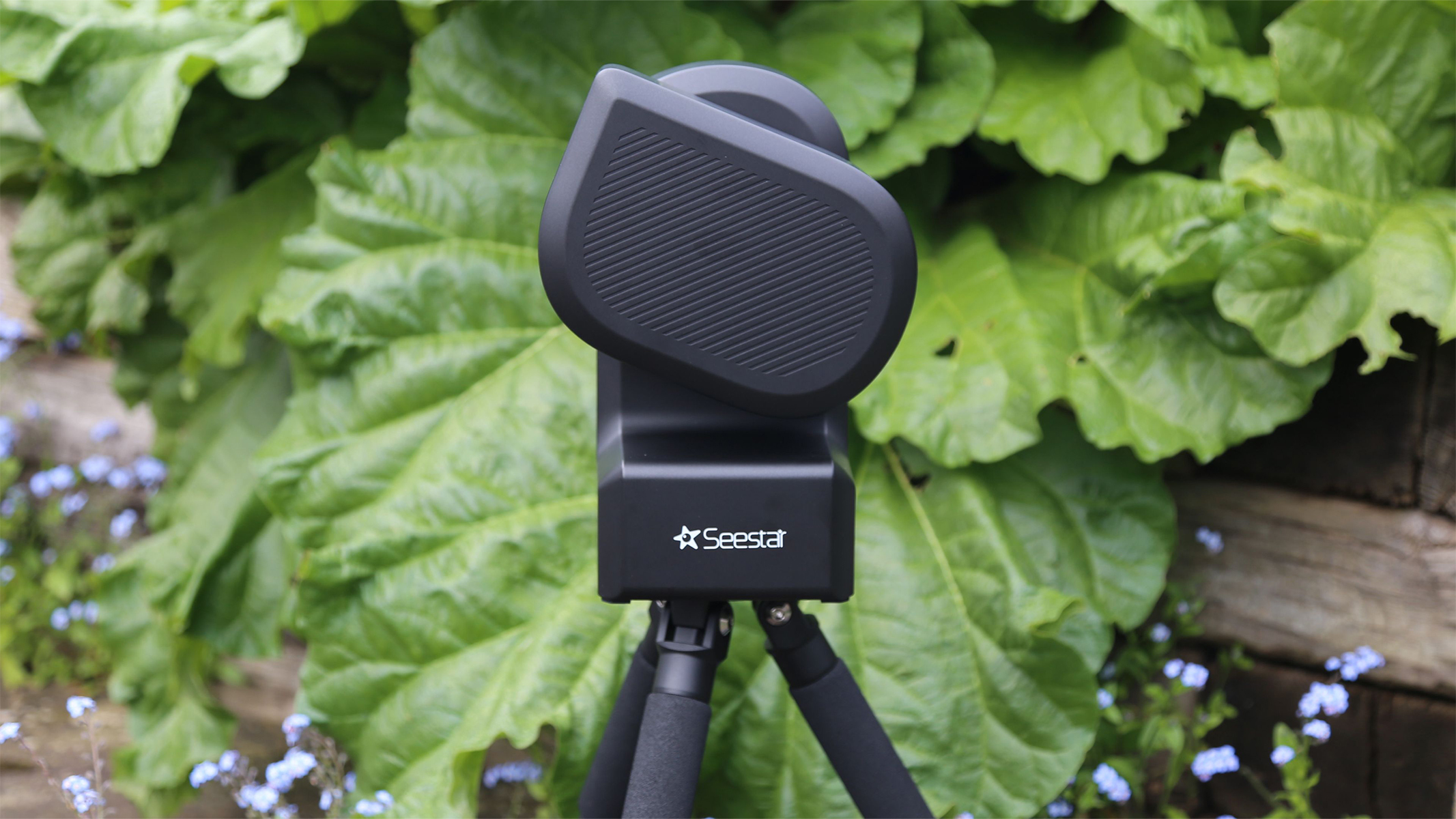
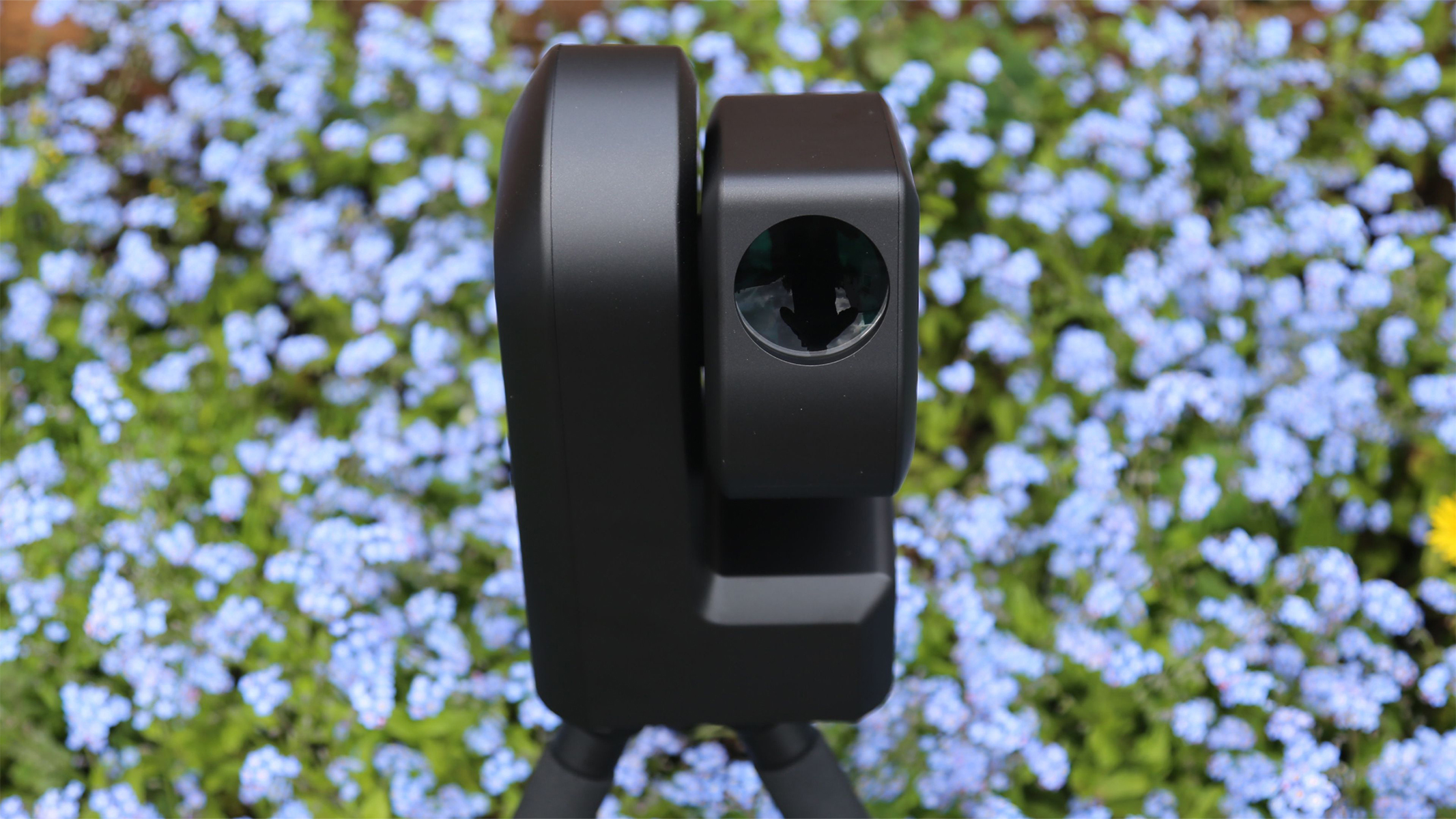
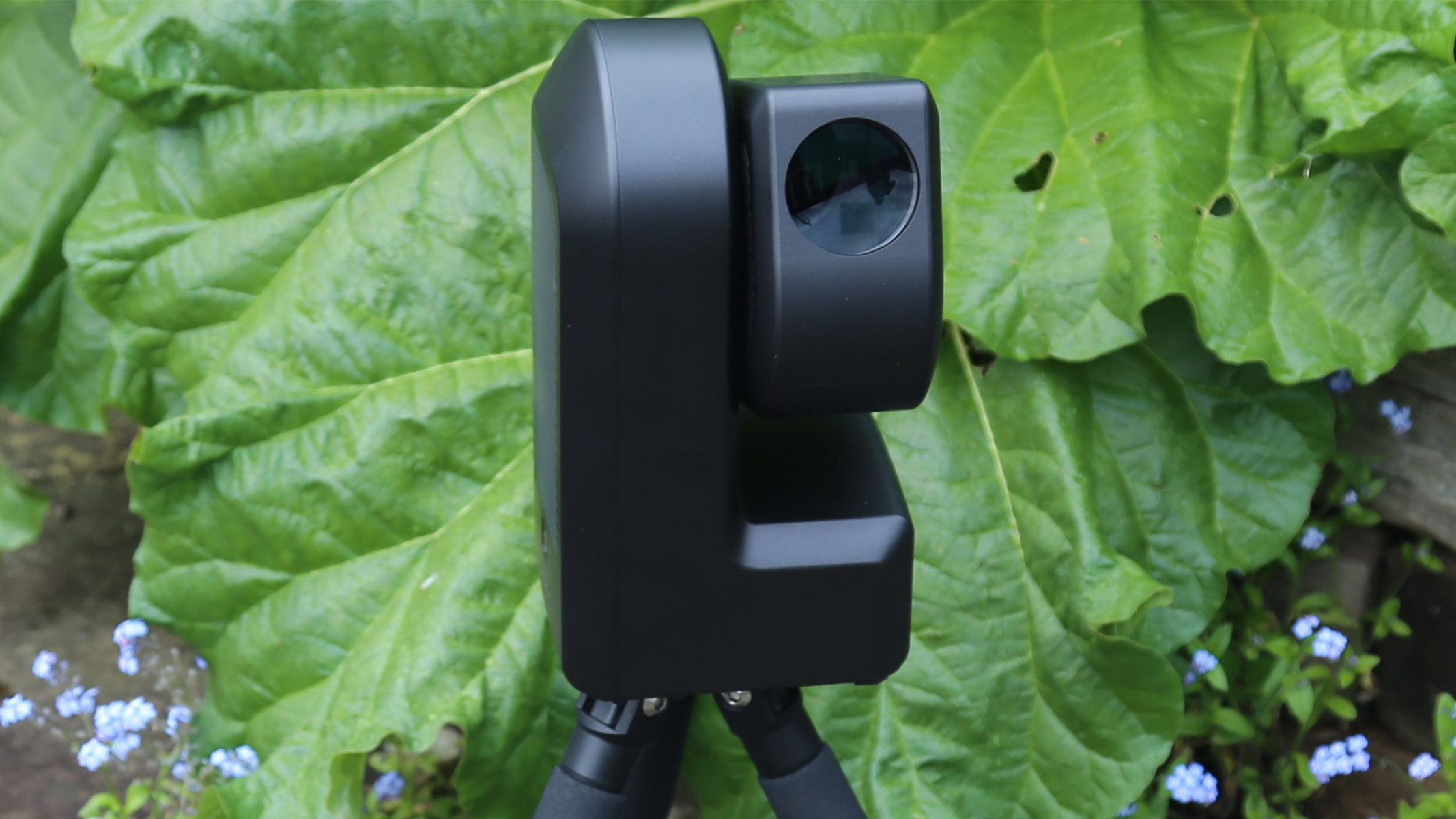

Specifications
Reasons to buy
Reasons to avoid
✅ You want a portable smart telescope: Not only is this a premium smart telescope but it's also highly portable meaning you can go anywhere with it.
✅ You're a beginner to astrophotography: This telescope offers a budget-friendly way to get into astrophotography with ease.
❌ You are an experienced astrophotographer: The resolution of the images is quite low so those with more experience in astrophotography may be disappointed.
❌ You want to see details: The small aperture of the Seestar S50 means you get less detailed views than a telescope with a larger aperture would offer.
🔎 ZWO Seestar S50 A fantastic smart telescope that offers premium quality at an affordable price ★★★★½
The ZWO Seestar S50 is a premium smart telescope that offers a great experience of viewing the night sky without breaking the bank. Able to capture amazing photos of the sun and moon plus galaxies and nebulae, you won't be disappointed.
Aperture: The Seestar S50 hosts a 2-inch (50 mm) aperture, making it possible for you to catch glimpses of deep-space objects such as the Orion Nebula or the Whirlpool galaxy. We were particularly impressed by the images of nebulae.
Optics: With an apochromatic triplet refractor, you can get fantastic views of the night sky with great coloration and no chromatic aberration.
Technology: The Seestar S50 has an alt-azimuth mount meaning the aperture arm can move in all directions by the push of a button on the accompanying app.
Accessories: While you don't get any extra eyepieces with this telescope (as it's a smart telescope), you do get a carry case, tripod and solar filter. You will also need to download the accompanying app.
Quality of build: This is a quality smart telescope that feels solid and stable on its tripod.
Attributes | Notes |
|---|---|
Design | Compact and portable. Solid build |
Performance | Fantastic performance and easy to use with accompanying app |
Functionality | Excellent app interface |
The best budget telescopes under 500 dollars comparison
Category | Model | Score | Row 0 - Cell 3 |
Best overall telescope under $500 | Celestron Astro Fi 102 | ★★★½ | Row 1 - Cell 3 |
Best budget telescope under $500 | Celestron StarSense Explorer DX 102AZ | ★★★½ | Row 2 - Cell 3 |
Best budget telescope under $300 | StarSense Explorer LT 114AZ | ★★★ | Row 3 - Cell 3 |
Best budget telescope under $200 | Celestron PowerSeeker 127EQ | ★★★ | Row 4 - Cell 3 |
Best budget telescope under $100 | Celestron FirstScope 76 | ★★★ | Row 5 - Cell 3 |
Best budget telescope for deep space | Celestron StarSense Explorer DX 130AZ | ★★★★ | Row 6 - Cell 3 |
Best for backyard moon and planet gazing | Celestron StarSense Explorer LT 114AZ | ★★★ | Row 7 - Cell 3 |
Best budget telescope for smartphone astrophotograpjy | Celestron Inspire 100AZ | ★★★★ | Row 8 - Cell 3 |
Best budget telescope for children | Celestron AstroMaster 70 AZ | ★★★ | Row 9 - Cell 3 |
Best EQ mount budget telescope for youngsters | Celestron AstroMaster 114EQ | ★★★★ | Row 10 - Cell 3 |
Best budget telescopes under 500 dollars Frequently Asked Questions

Josh Dury is a recognized landscape astrophotographer, presenter, writer and educator based near the Mendip Hills AONB in Somerset, United Kingdom. His work has been recognized by several photographic bodies, including The Insight Astronomy Photographer of the Year Competition, UNESCO, to major UK and international publishing and media outlets, including the BBC and ITV to name but two and photography suppliers Sigma and Benro. Josh has been recognized by the International Dark-Sky Association (IDA) as an active campaigner for Dark Skies. He also graduated with first-class honors from his Bachelor of Arts Degree in Photography at the University of the West of England (UWE).
The top most frequently asked questions on the best budget telescopes under $500 as answered by our contributing expert, astronomer Josh Dury.
When is Amazon Prime Day Big Deals Days in October?
Amazon Prime Day in October has just finished. We had a dedicated team of experts seeking out the best deals and posting them in our Prime Day hub. The same will happen for Black Friday next month.
What is the best budget telescope under $500?
The Celestron Astro Fi 102 is the best budget telescope on the market; not only is it designed with Celestron optical coatings which provide greater sharpness and contrast of astronomical objects, it's motorized mount is a real bonus for beginners.
What is the best budget telescope for deep space?
The Celestron StarSense Explorer DX 130AZ best budget telescope for deep space observation thanks to its larger aperture which allows greater light gathering. It offers wider views when observing galaxies and nebulas, too.
What is the best budget telescope for astrophotography?
The Celestron Inspire 100AZ is the best budget scope for basic astrophotography. It's easy to maneuver and locate objects in the night sky thanks to its built-in StarPointer Pro finderscope. The smartphone adaptor allows users to capture photos of the lunar surface and the planets on their smartphone.
What is the best budget telescope for beginners?
The Celestron FirstScope 76 is suitable for young users who want to get closer to the stars. This telescope is available for less than $100, and its table-top mount allows for casual observing. Its Celestron optical coatings benefit from enhanced light gathering, providing sharper views of nearby astronomical targets while remaining affordable and compact in its design.
What is the best budget telescope for viewing planets?
The best budget telescope for viewing planets is the Celestron StarSense Explorer LT 114AZ. Its Maksutov-Cassegrain design means the user experiences reduced color fringing, which is essential when observing planetary details. Its 114mm aperture diameter provides good light gathering, enough for quality views of planets in our own solar system.
Is it worth buying a cheap telescope?
Definitely. Astronomers need to start somewhere, so what better than getting to know the ropes than starting with a beginner telescope to build up your confidence and observe the night-sky? Using telescopes isn't necessarily difficult and most budget, beginner-friendly telescopes come with tools and aids to let you make the most of your purchase.
What size telescope do I need to see Jupiter?
I would suggest the more light gathering the better. More light gathering allows us to resolve fainter planetary details, including its weather bands and weather phenomenon, including the great red spot. This is also better suited to viewing its planetary systems, including the galilean moons.
Can you see the rings of Saturn with a cheap telescope?
You bet you can! When using an affordable telescope coupled with variable eyepieces it is possible to distinguish the rings of Saturn which look discernibly different, appearing more elongated than other planets. It is also possible to observe the cassini division between the rings.
Is a $100 telescope worth it?
Any form of telescope is 100% worth it, as it gets more of us interested in astronomy and looking up to the stars. As a result, we begin to appreciate night sky more and consider the universe above our heads.
If you have a $100 budget and an itch to start stargazing, then having a $100 telescope is miles better than having no telescope at all. You don't need to spend thousands to get views of the night sky.
If you've got a child with an interest in astronomy, but fickle levels of commitment to their hobbies, a $100 telescope also won't set you back as much if they are going to move on to another hobby within a month.
Update log
Editor's note 08/28/25: Updated introduction to include the Corn moon and blood moon on September 7 and the new moon on September 21 allowing for better visibility of various faint deep space objects. Added in the ZWO Seestar S30 as the best smart telescope and the ZWO Seestar S50 as the best premium smart telescope around $500.
How to choose the best budget telescope for you
There are a few things to consider when choosing the best budget telescope for your needs. You'll need to think about how much you want to spend, of course, but also what your experience level is and how much you wish to stargaze. Below we go into each factor in more depth so you can feel confident making your choice.
Budget: this is probably the most important consideration for many people, and the reason we pulled together this guide. It's vital you know how much you're willing to spend so you can see what's in your price range. Once you've settled on a budget, you can start looking for a scope to match. It also sets expectations as telescopes can cost thousands and it's unlikely that models costing hundreds (or less) can compete with the power or sophistication of top-end models. Remember, a low budget doesn't mean you have to miss out on a fulfilling stargazing experience. Be discerning when it comes to deals; sometimes there are real bargains to be had, but it's important to be wary of scams.
Value for money: another important factor to consider is whether or not you're getting good value for money. When looking for telescopes on a strict budget, you need to be sure that you aren't sacrificing too much on the quality of the product. For this, we recommend sticking to known manufacturers and reputable retailers. It's important to look at what you're getting for your money. Are you getting quality optics? Are there sufficient accessories? Have you got enough technology to satisfy your wants and needs? Sometimes waiting and saving to spend a little more can be worth it in the long term, so make sure to shop around before purchasing.
Intended use: now this is crucial because if you're not looking to jump in at the deep end or you just want to see the moon and some stars, then something like the Celestron FirstScope 76 is ideal. But that wouldn't work if you wanted to explore nebulas and galaxies. So you must consider what you want to view and how much time (and money) you want to invest into stargazing.
Quality: this one might seem a bit obvious, but it's important to know you're getting a quality product when you purchase a telescope. Have a look at the materials the scope is made of, have a look at the reviews and check out the specs of what you're buying. It doesn't matter how cheap a product is, you don't want it if it doesn't work. Research, knowing what you're buying and checking for quality are all important.
Manufacturer/Retailer: this point ties in with some of the others above but when you're looking for a budget telescope, you'll find that there's a seemingly endless number of options. Not all of them are reliable. Therefore, you should stick to known manufacturers you can rely on and have a history of producing good products. You should also stick to known retailers so that you know you're getting what you pay for and there's some accountability, and often a warranty, should something go wrong.
How we test the best budget telescopes under 500 dollars
Here at space.com, we get knowledgeable writers or expert in-the-field freelancers to review the telescopes that we recommend personally. Most of the telescopes you see in the guide above have been thoroughly tested and reviewed by people who know what to look for. Of course, most doesn't mean all. Where we haven't personally tested and reviewed a telescope, only models that have been carefully researched and approved make the cut.
We've included links to reviews in the guide above and in those reviews we consider design, performance, key specs and whether or not a telescope is worth purchasing. You will also find key points both for and against a particular model, bullet-pointed, and more often than not, we suggest alternative telescopes if what you're reading isn't for you.
It's not just budget telescopes under $500 that we review — we test a plethora of products, from high-end telescopes, binoculars and cameras, to headlamps and power banks. Our writers also review each product on its own merit and with complete impartiality so that our readers can rely on and trust in our opinion for credibility.
Breaking space news, the latest updates on rocket launches, skywatching events and more!

Jase Parnell-Brookes is the Managing Editor for e-commerce for Space and Live Science. Previously the Channel Editor for Cameras and Skywatching at Space, Jase has been an editor and contributing expert across a wide range of publications since 2010. Based in the UK, they are also an award-winning photographer and educator winning the Gold Prize award in the Nikon Photo Contest 2018/19 and named Digital Photographer of the Year in 2014. After completing their Masters degree in 2011 and qualifying as a teacher in 2012, Jase has spent the last two decades studying and working in photography and publishing in multiple areas, and specializes in low light optics and camera systems.
- Chris McMullenContributing Writer
- Kimberley LaneContributing writer
- Harry BennettE-commerce Staff Writer
